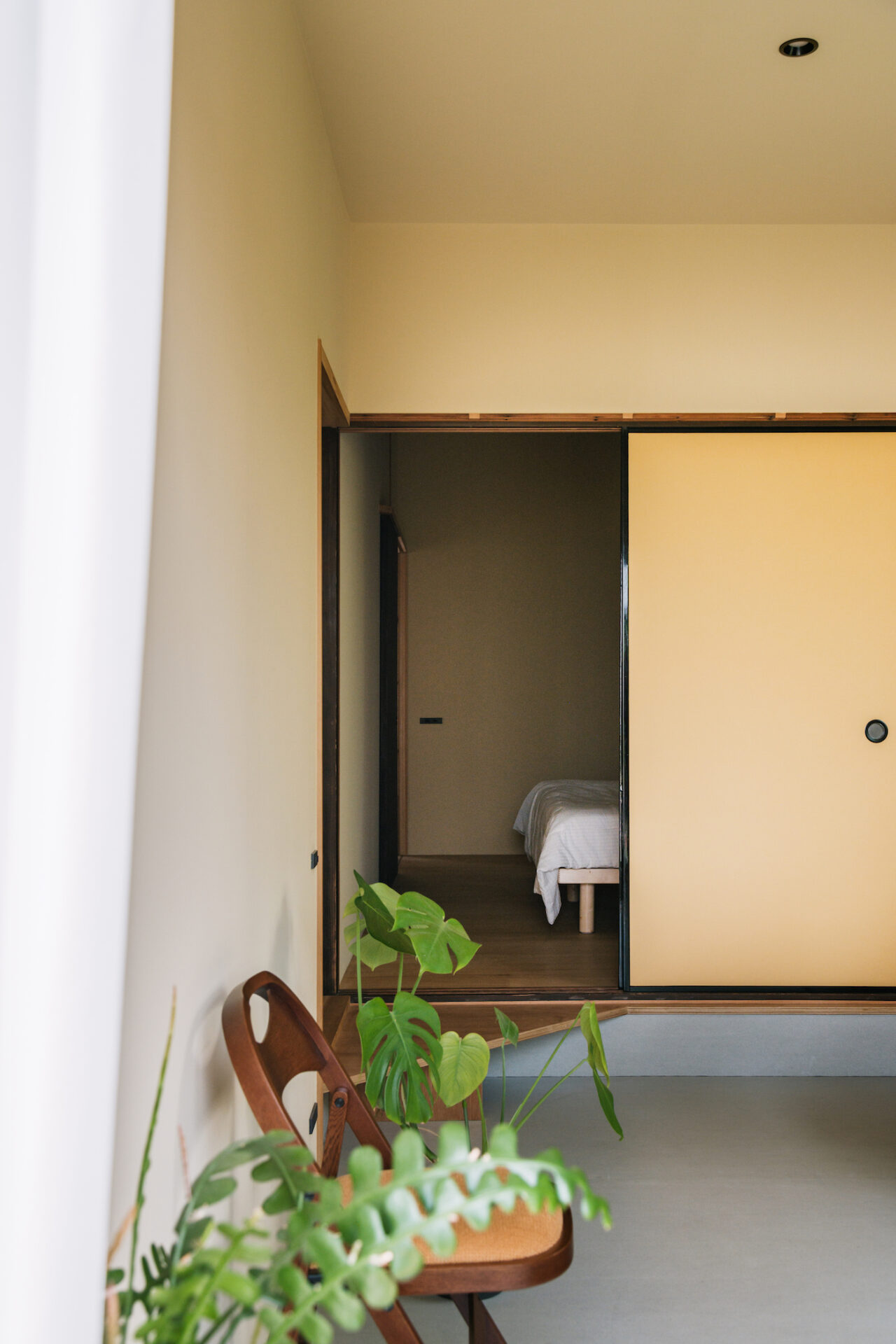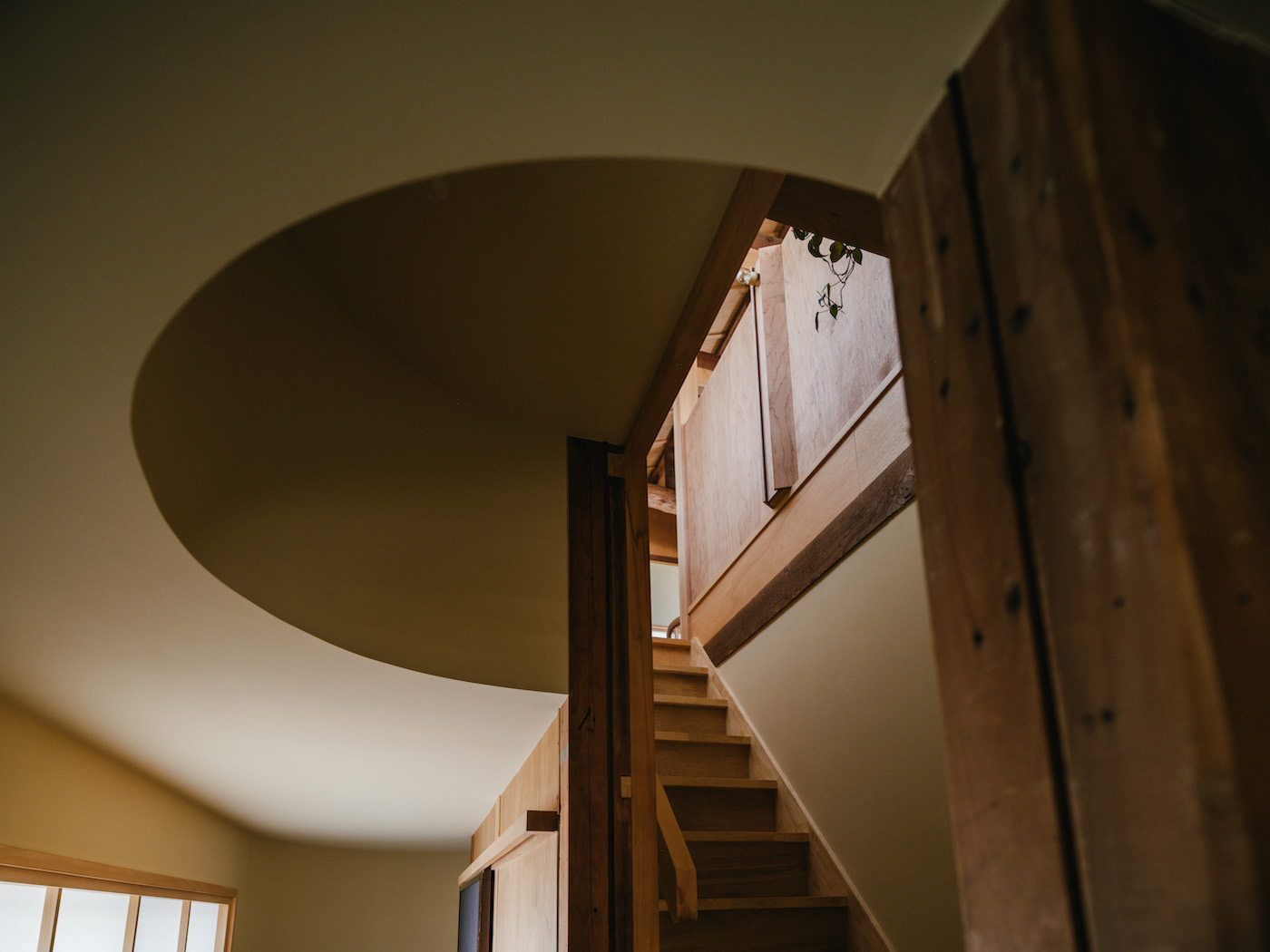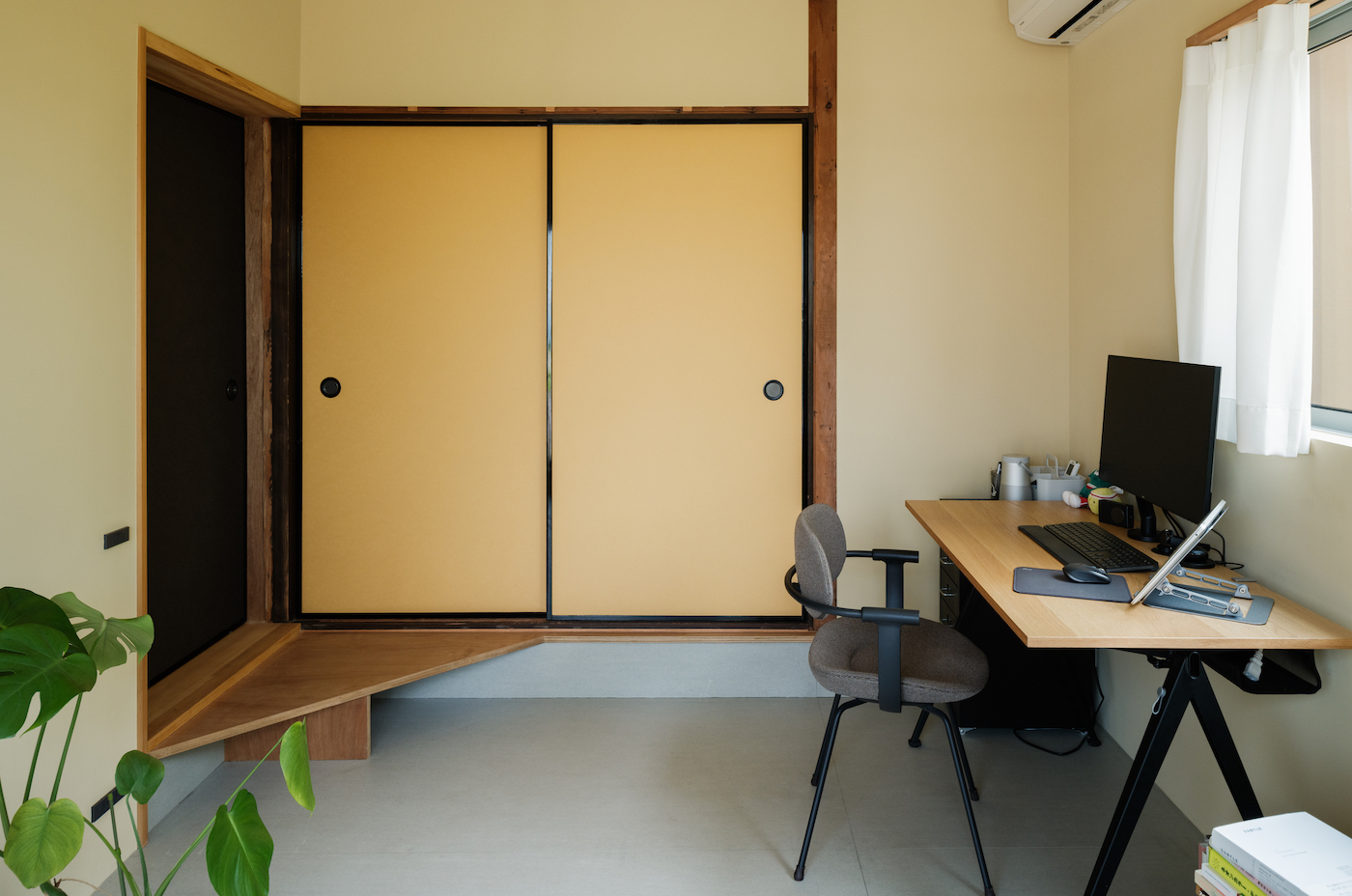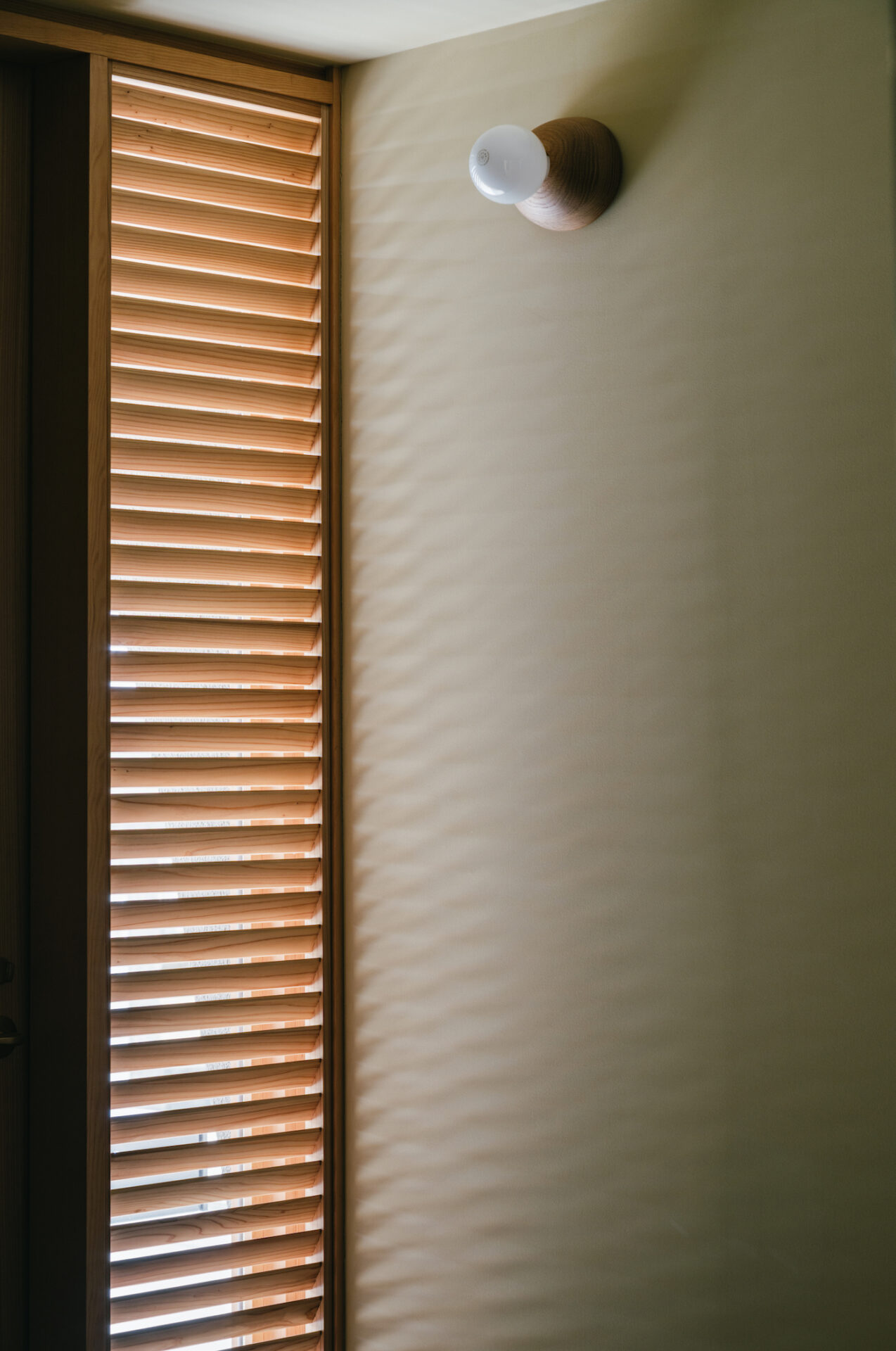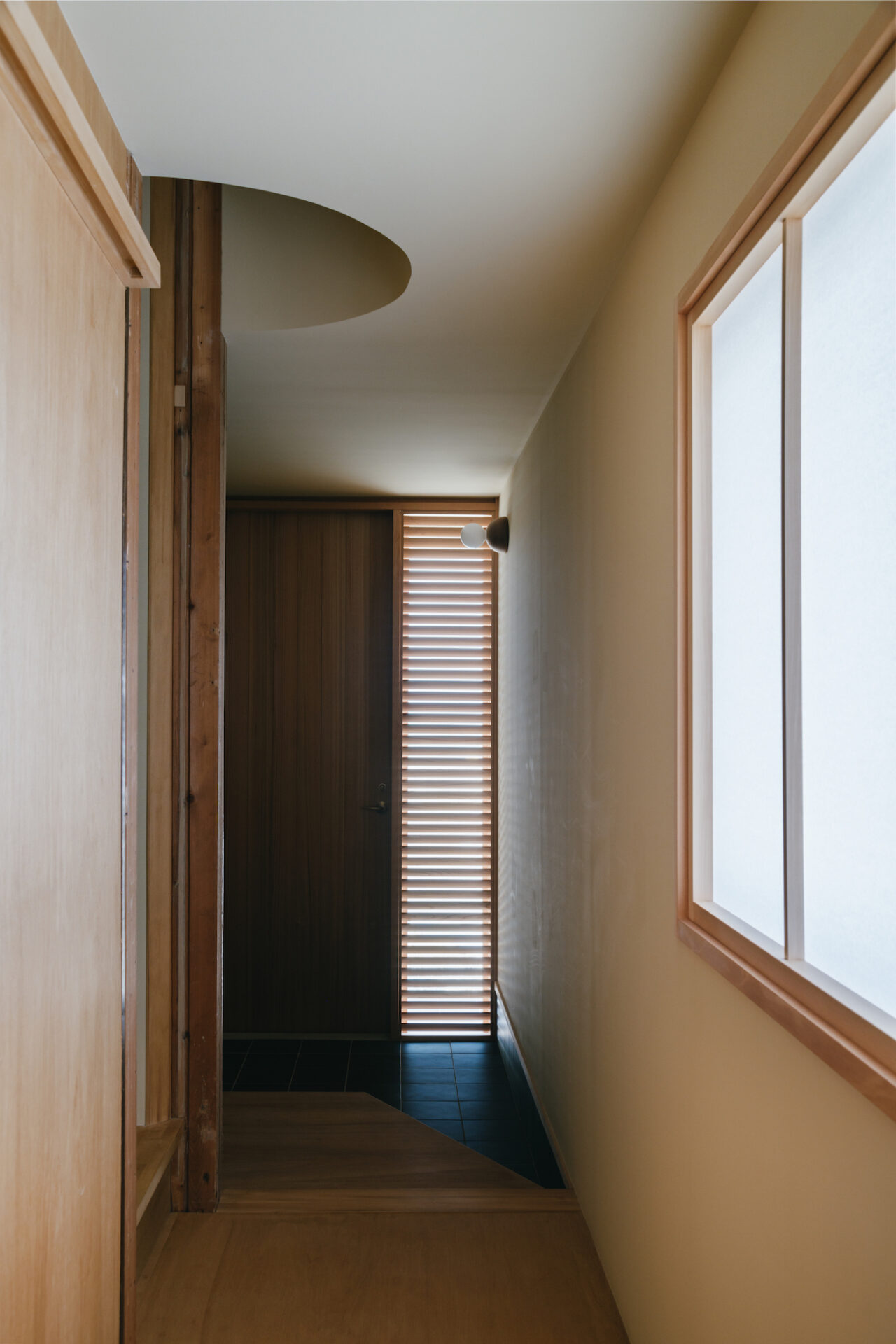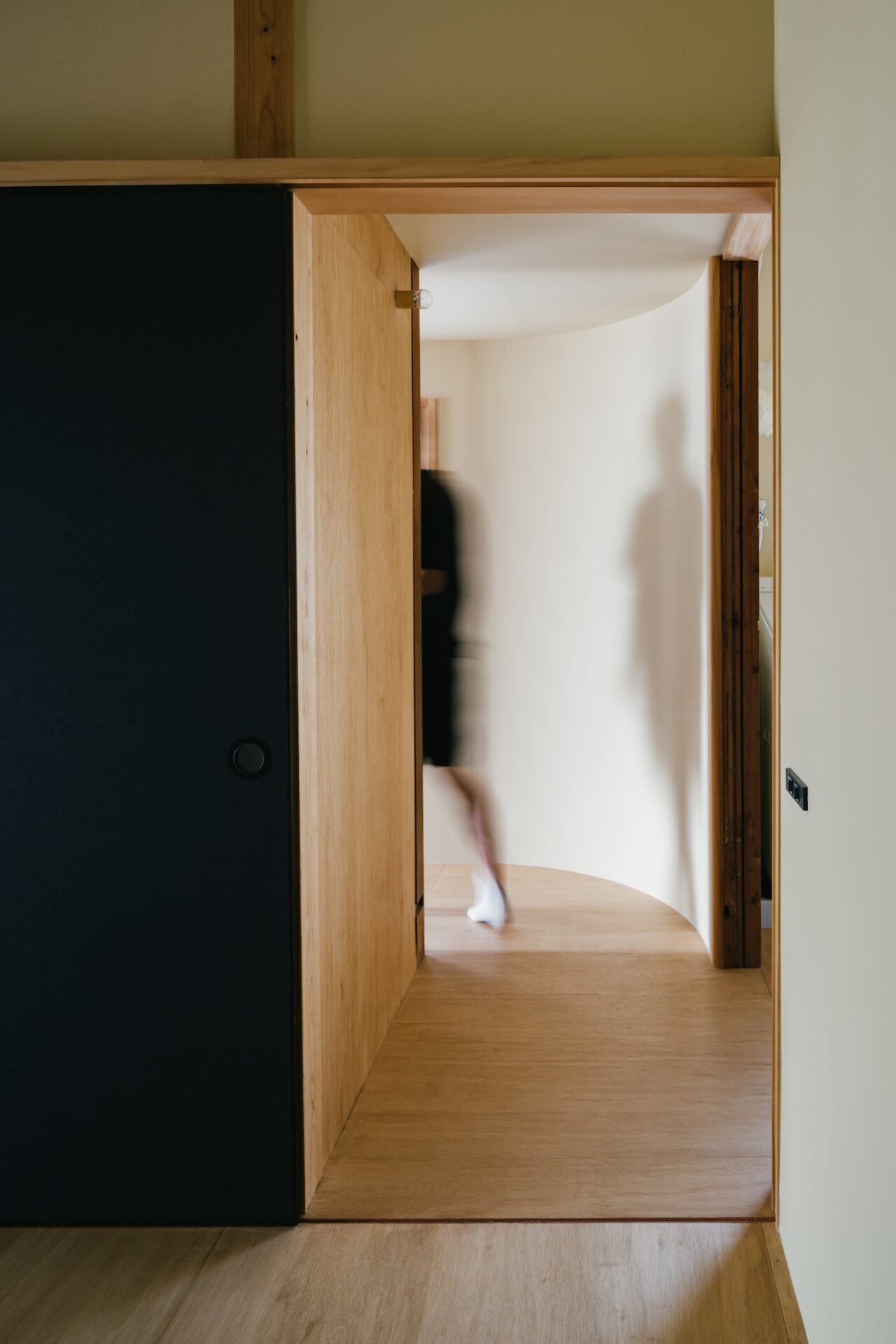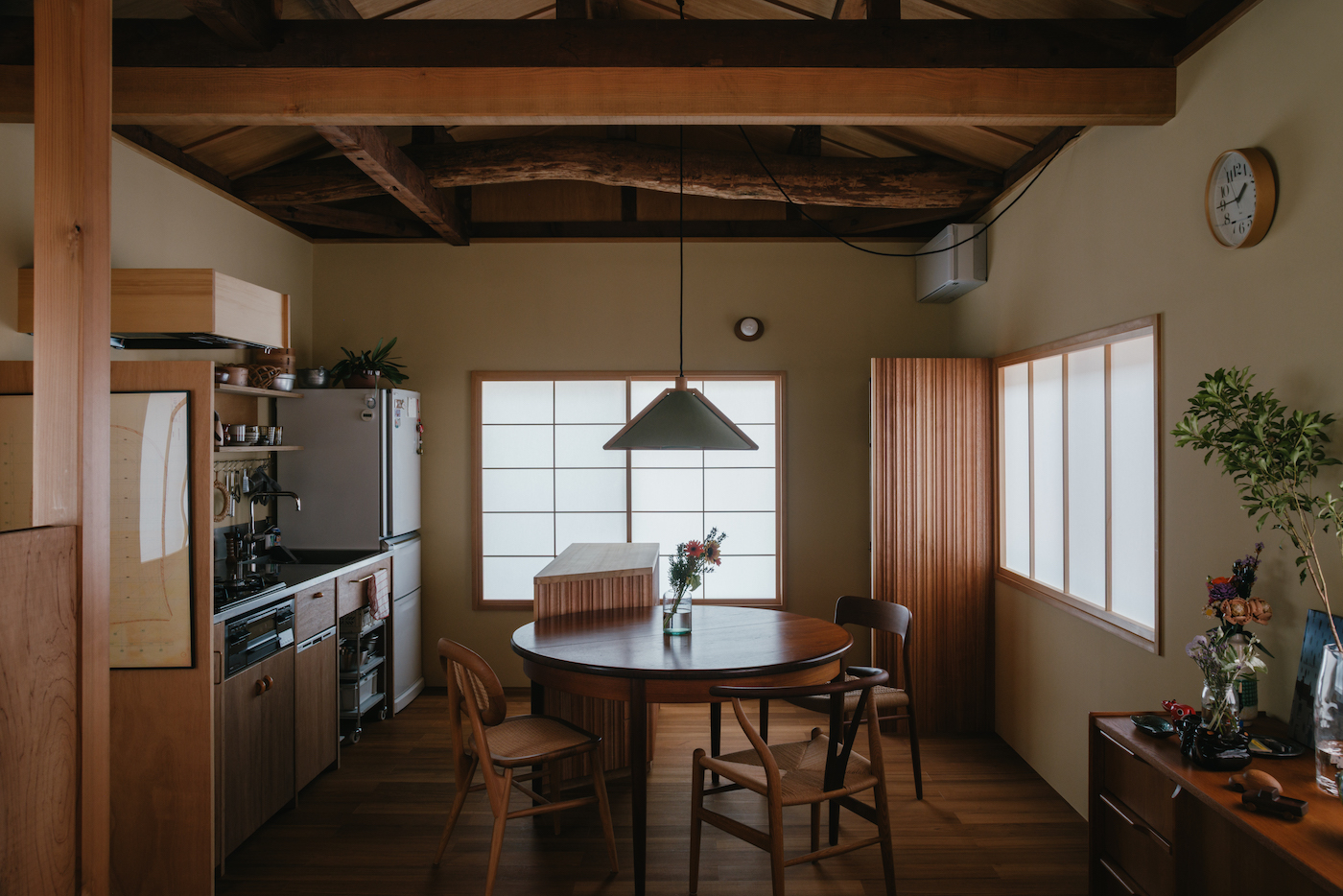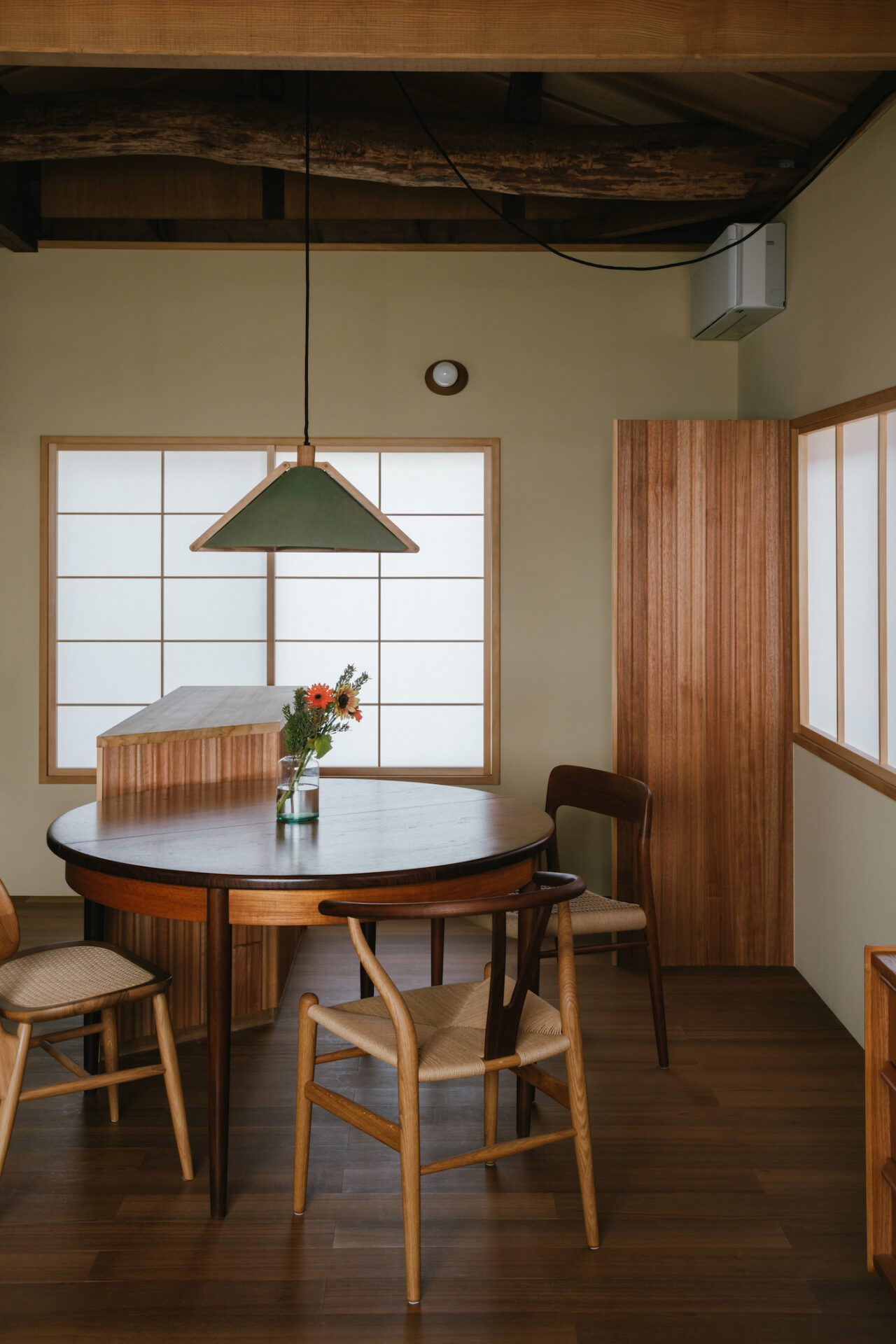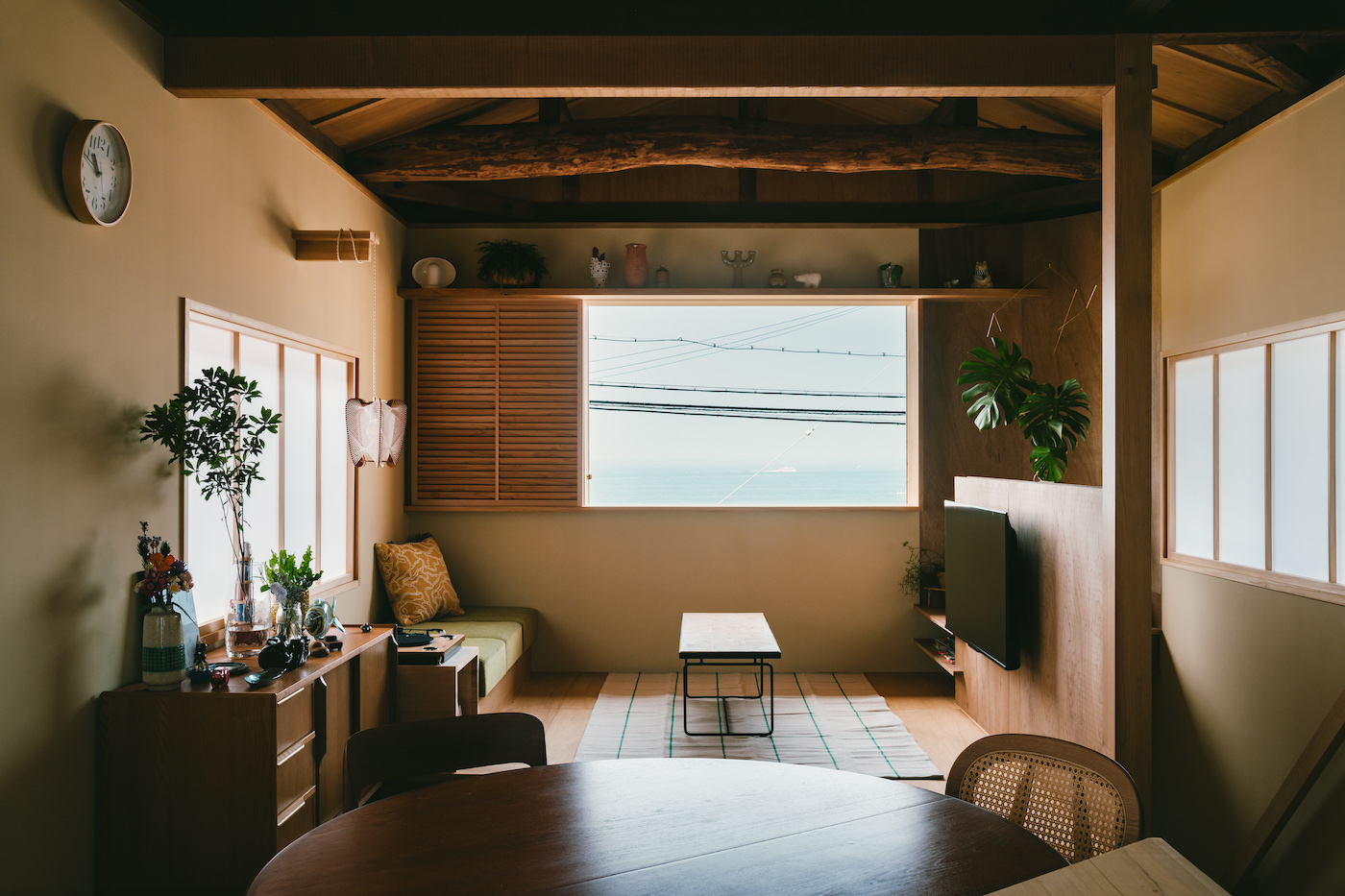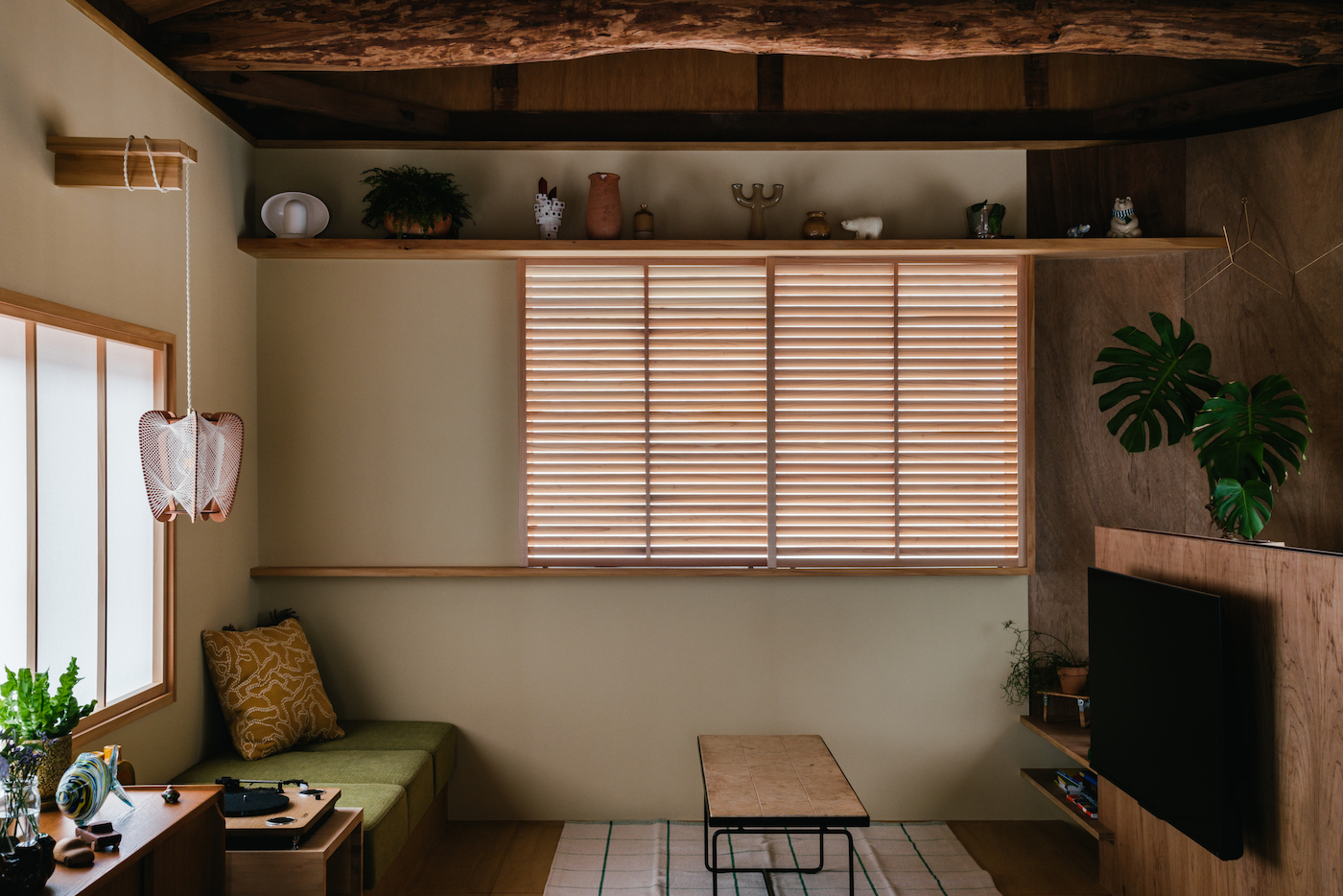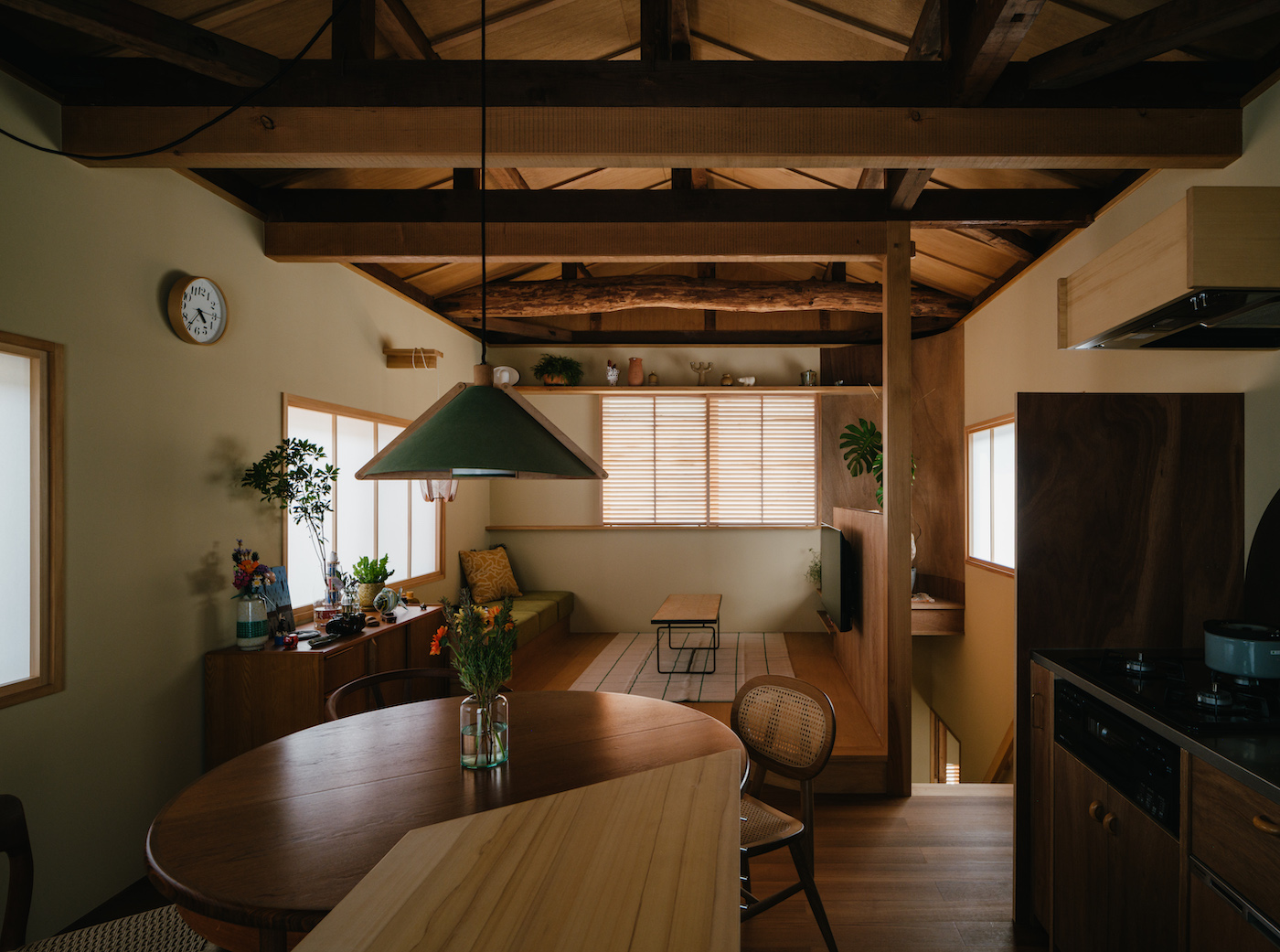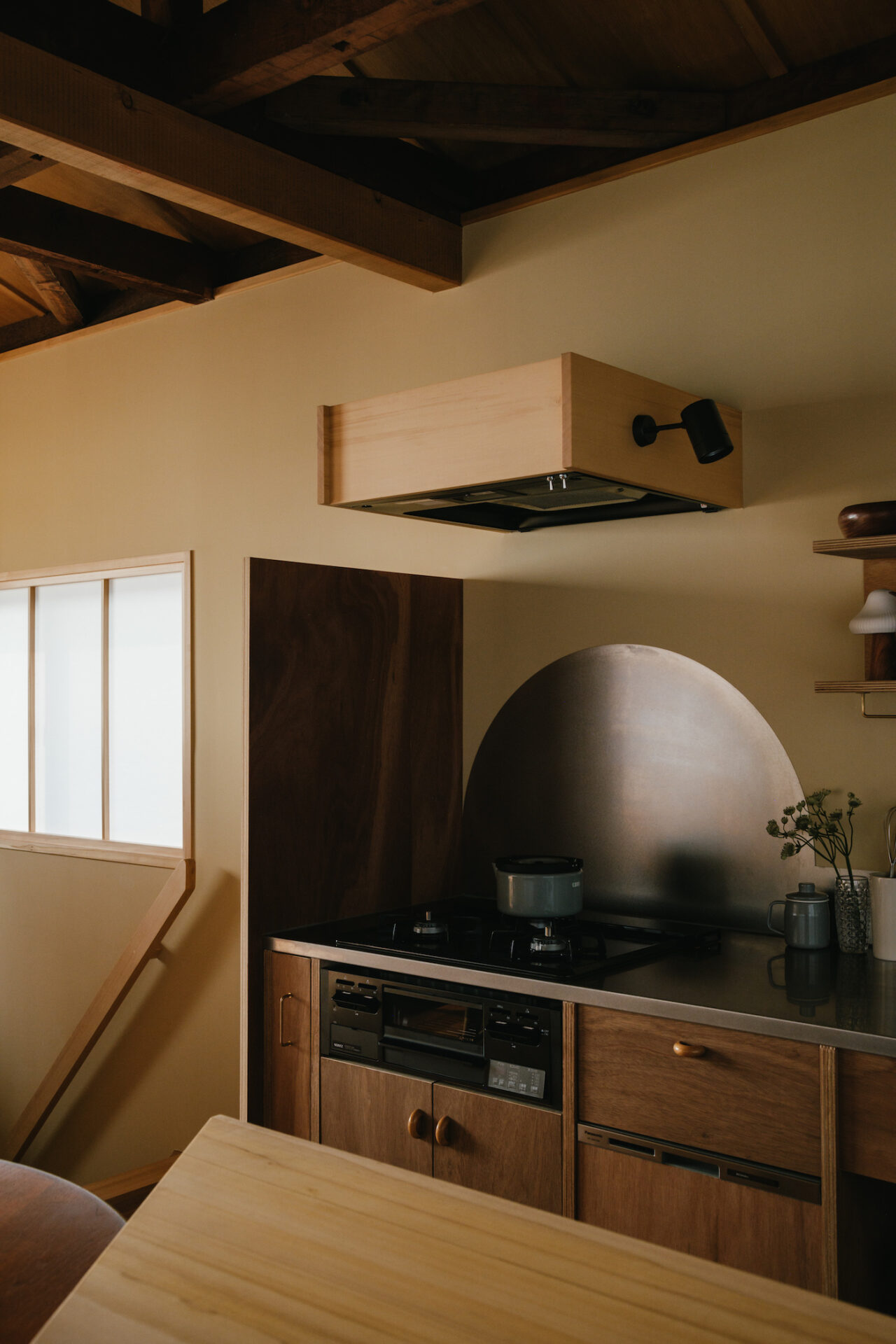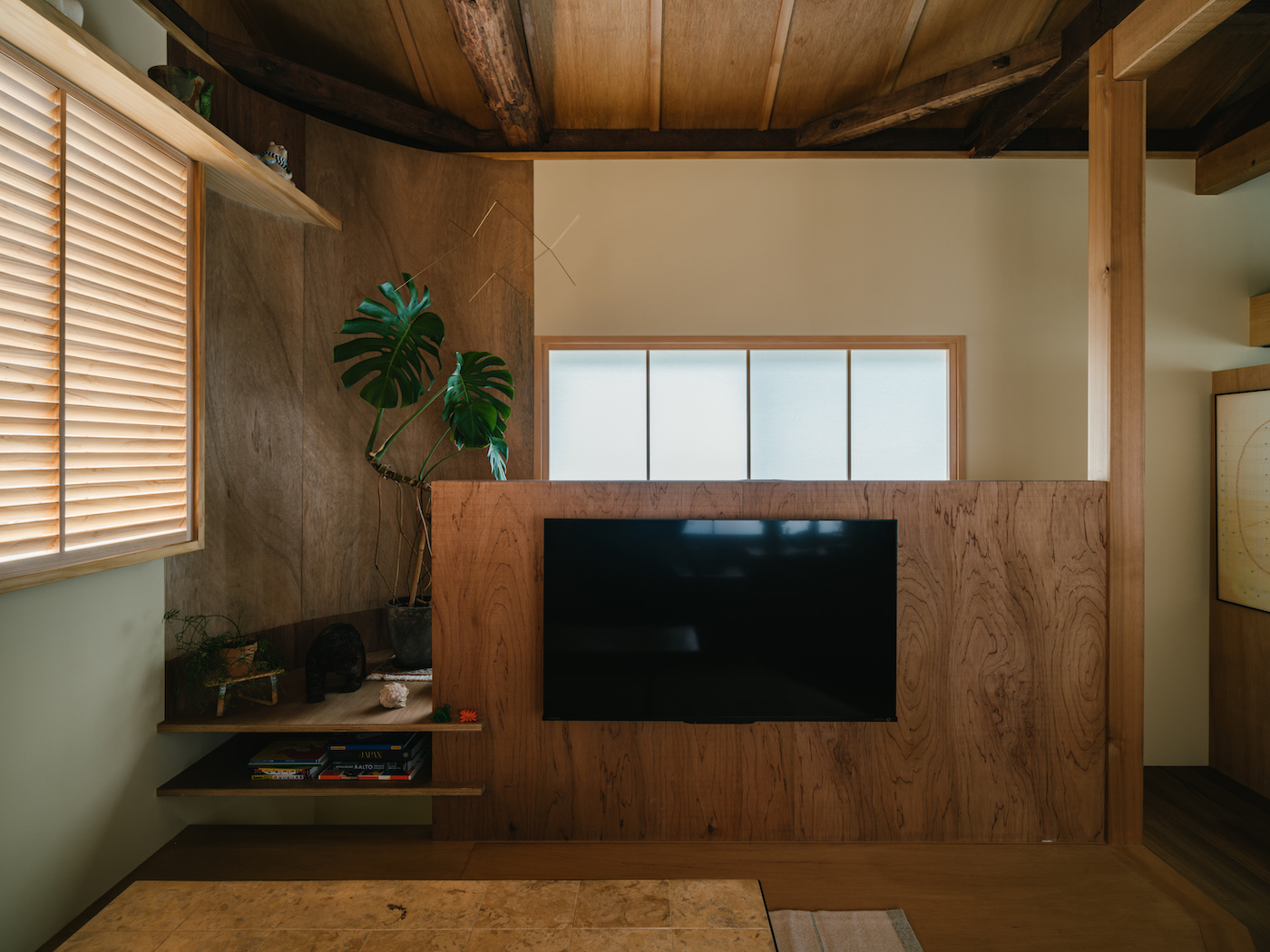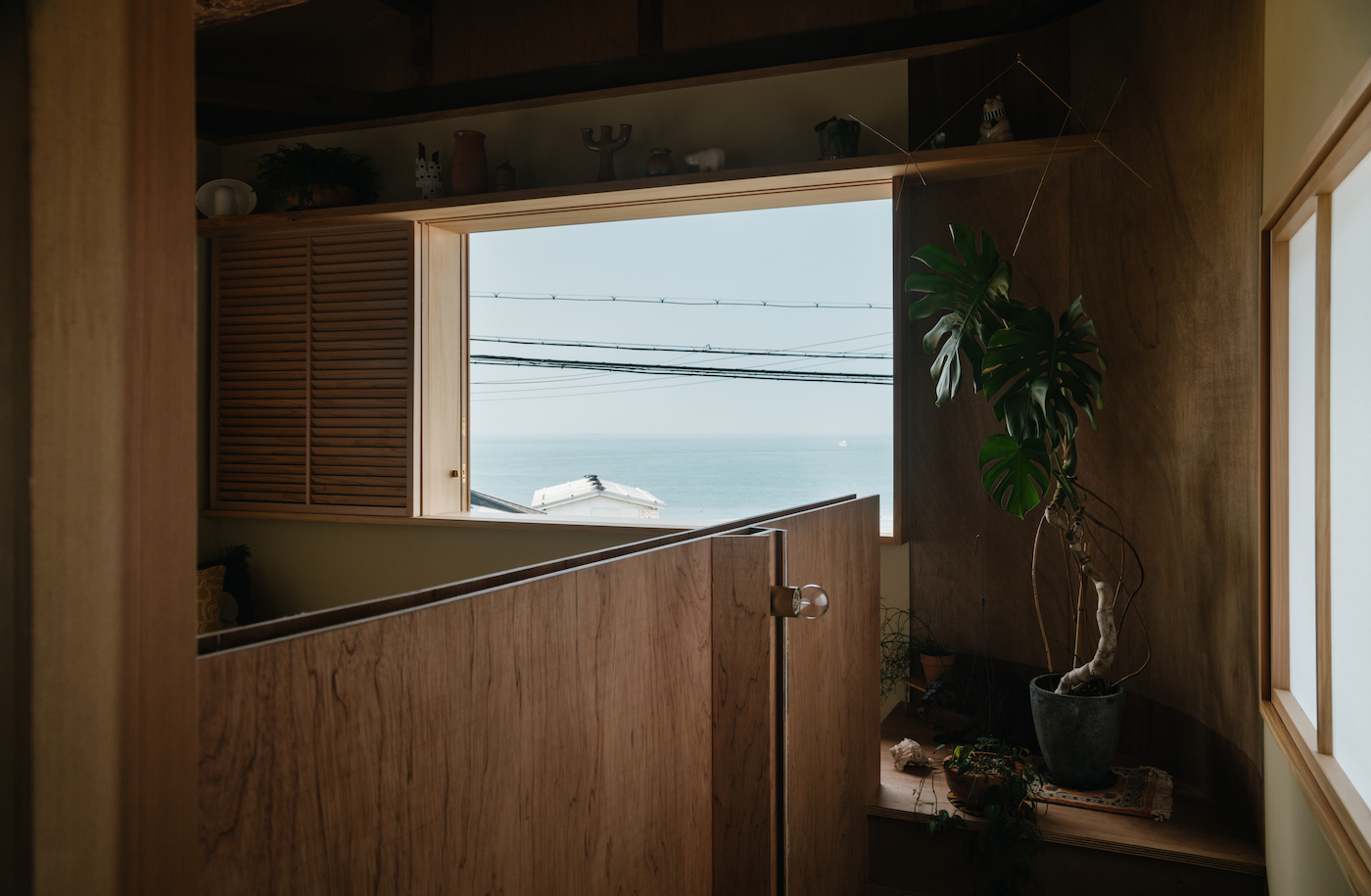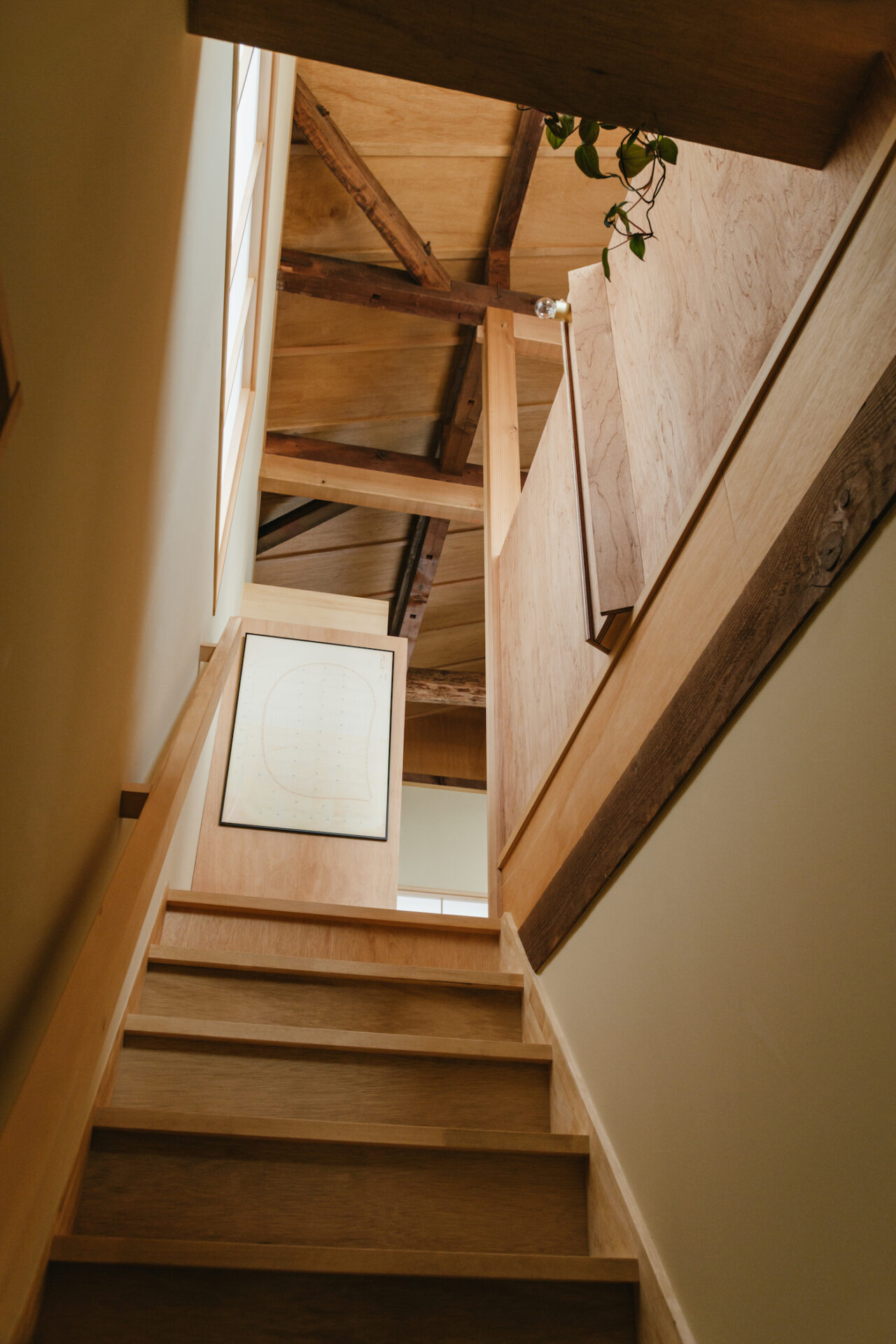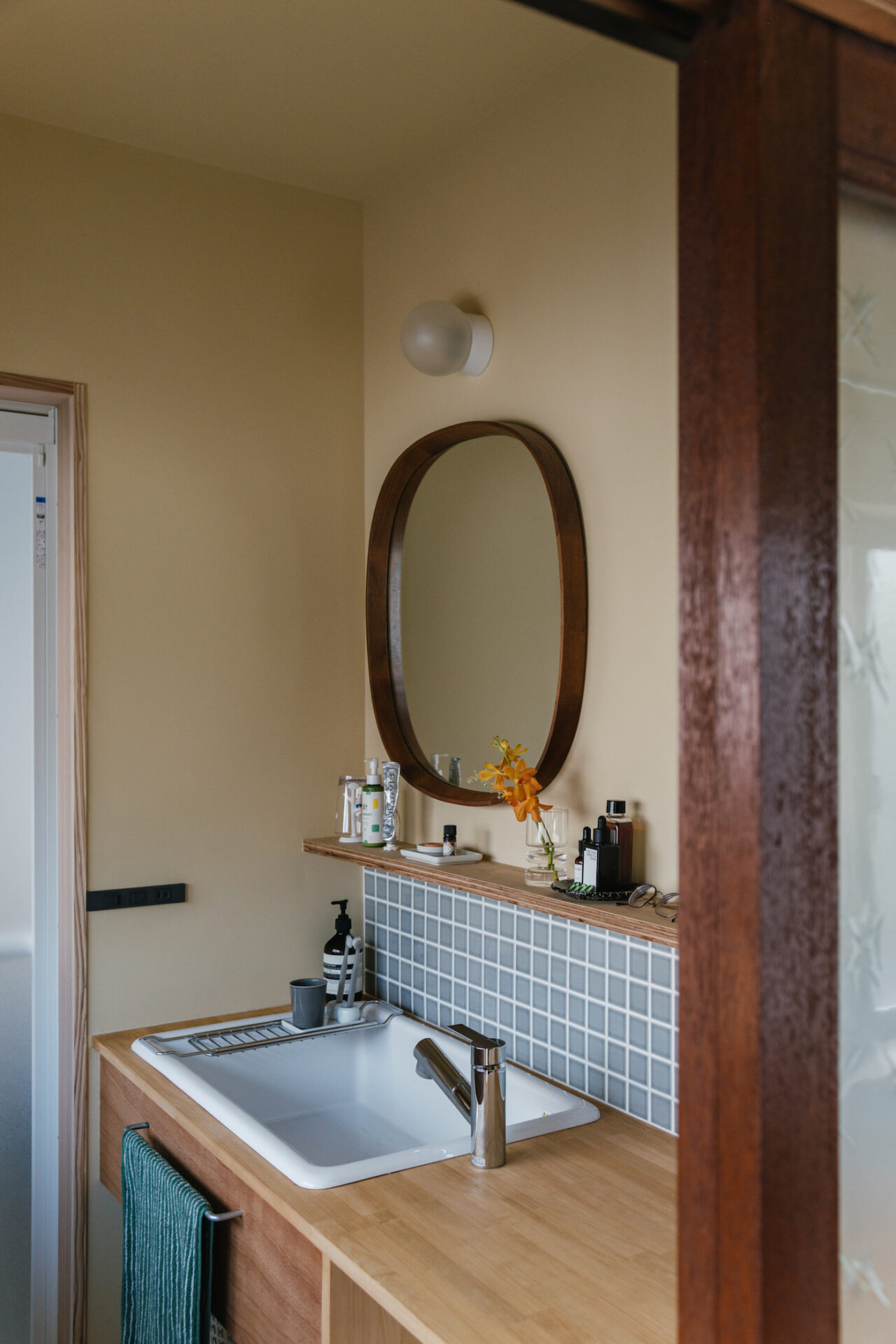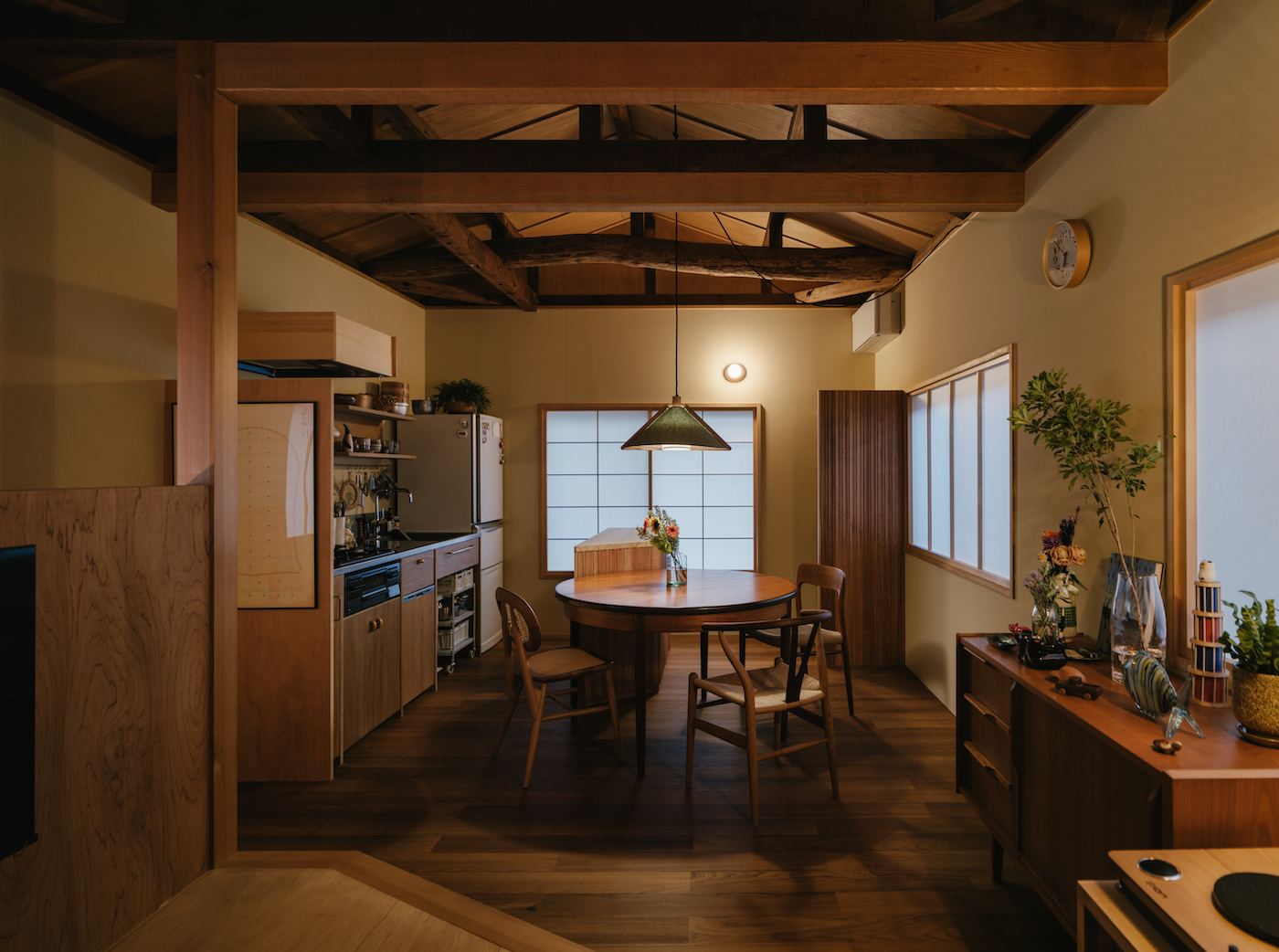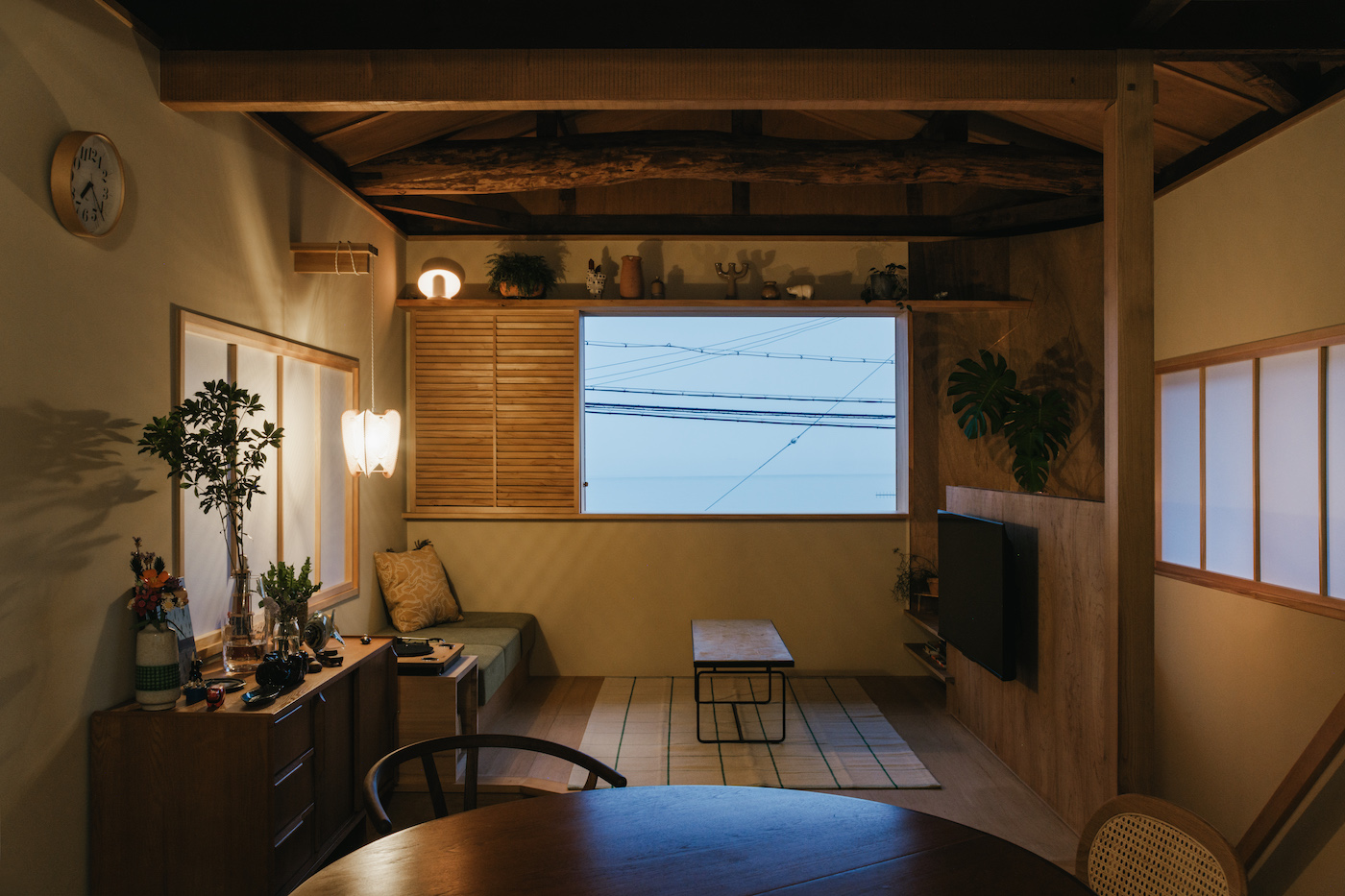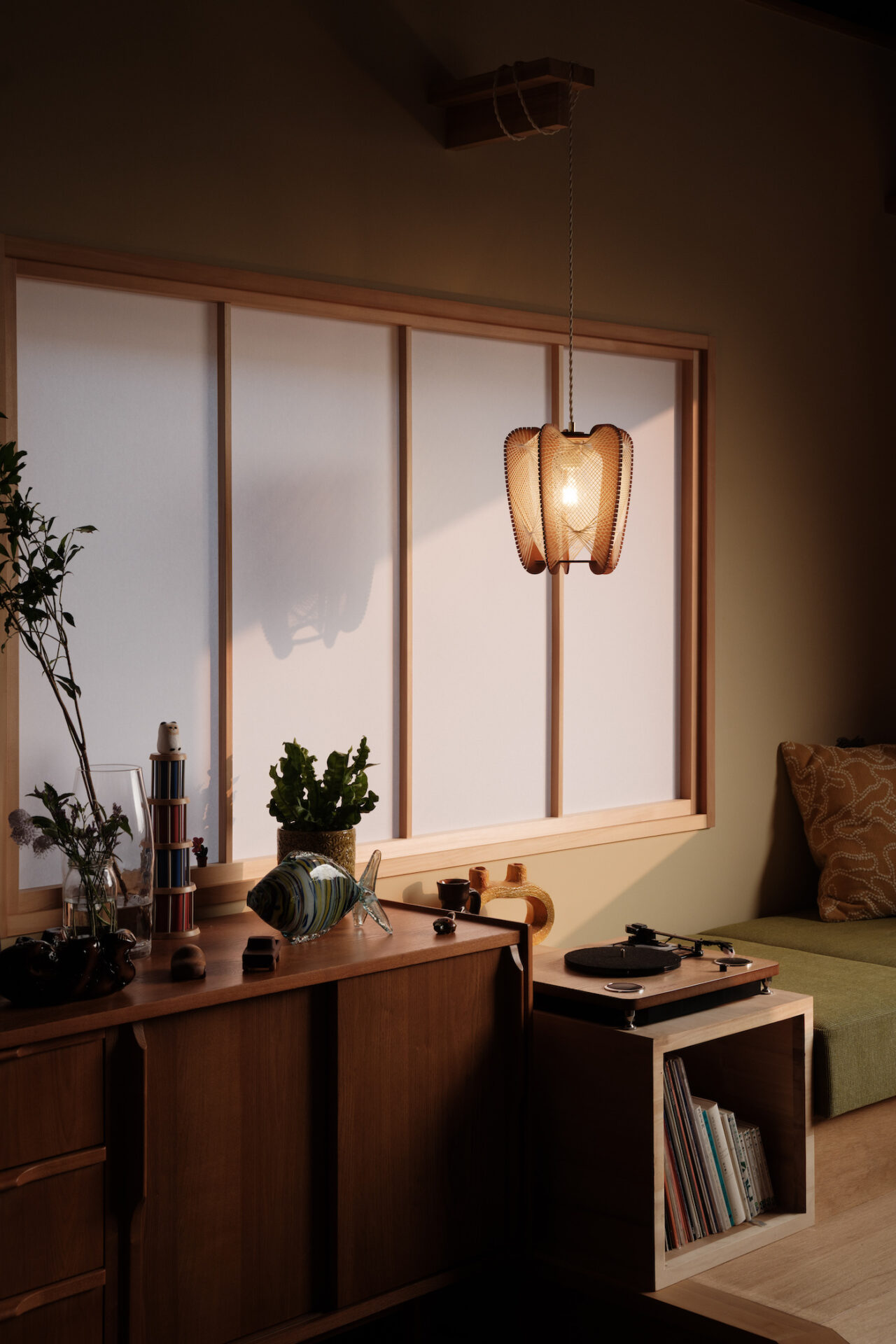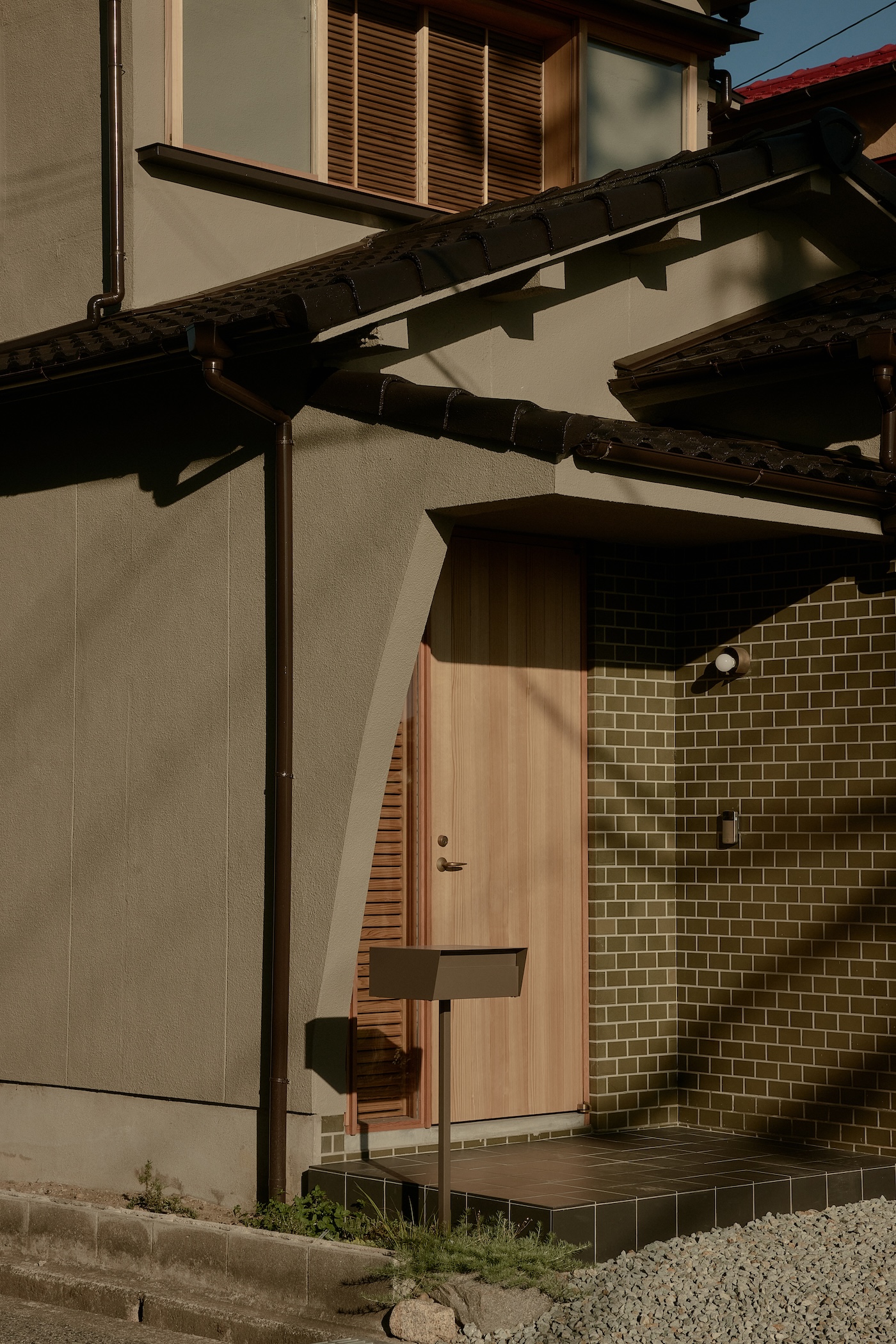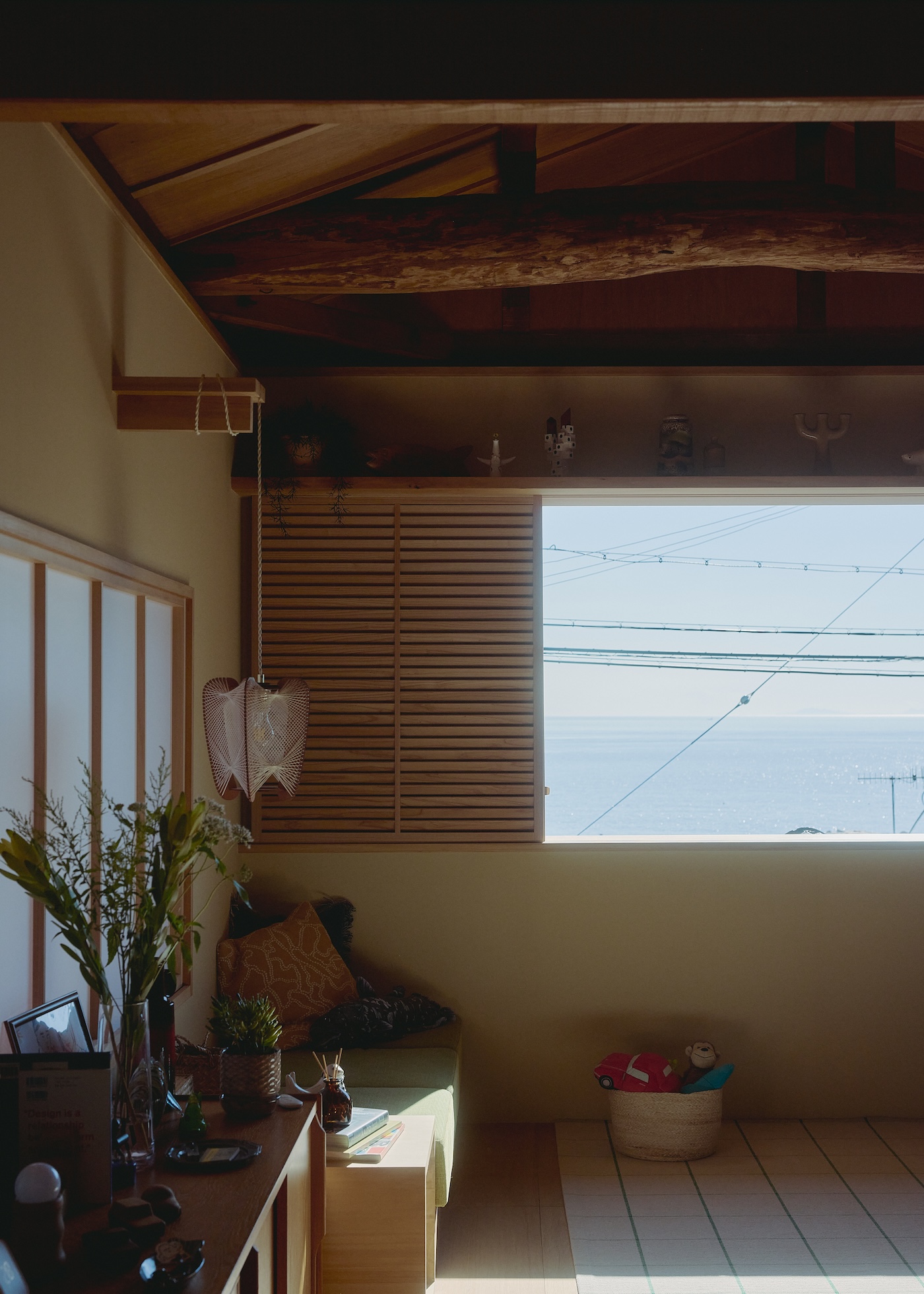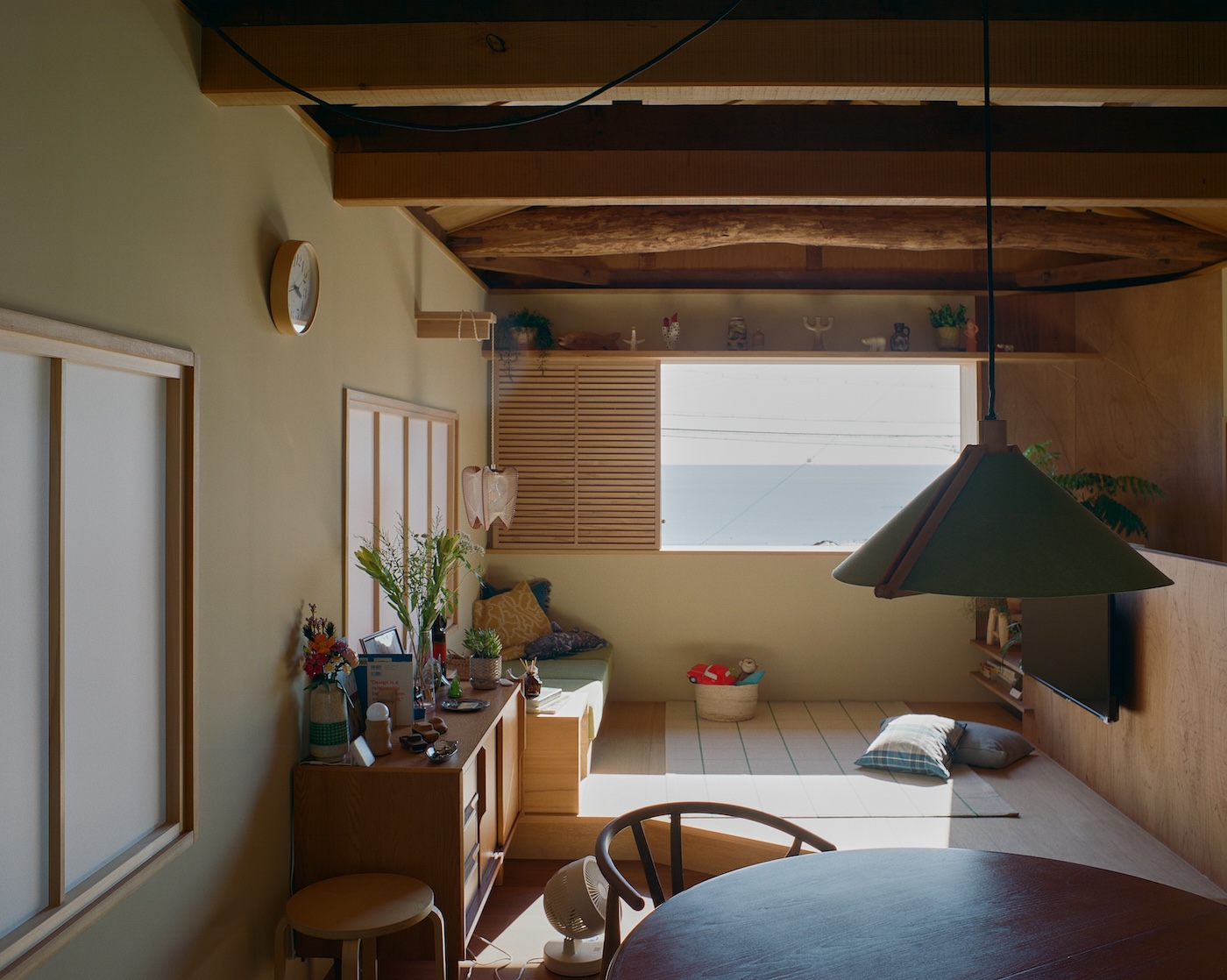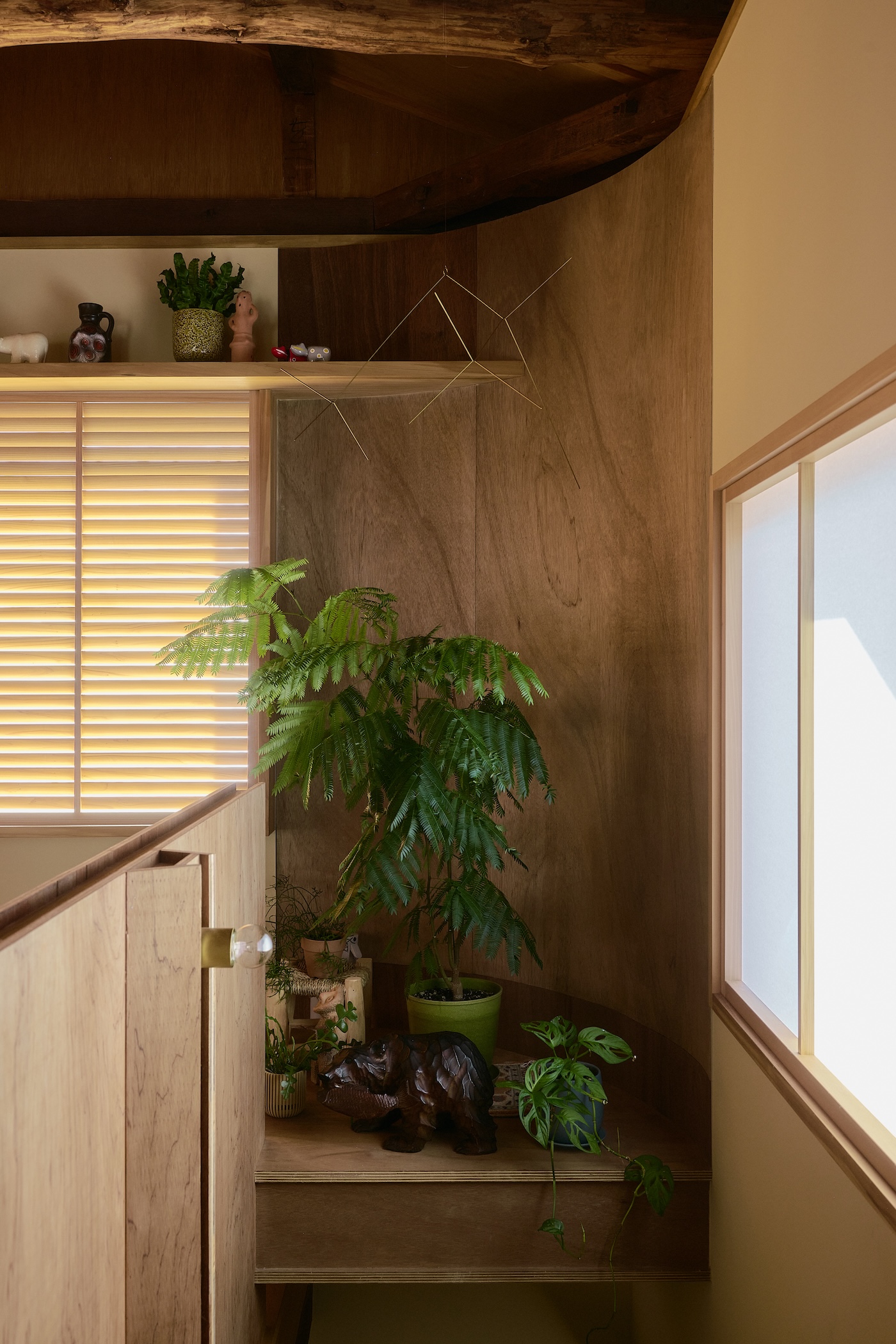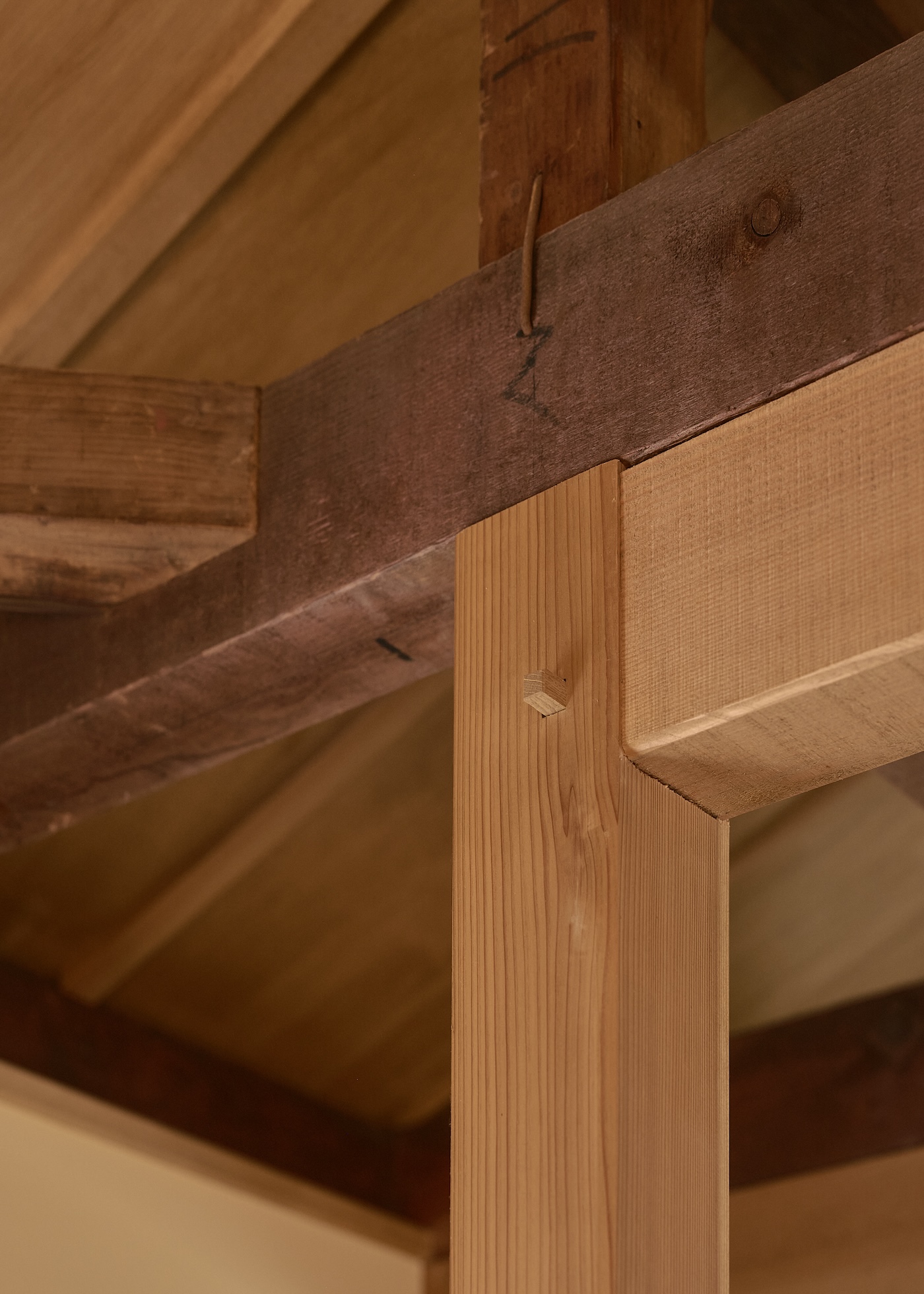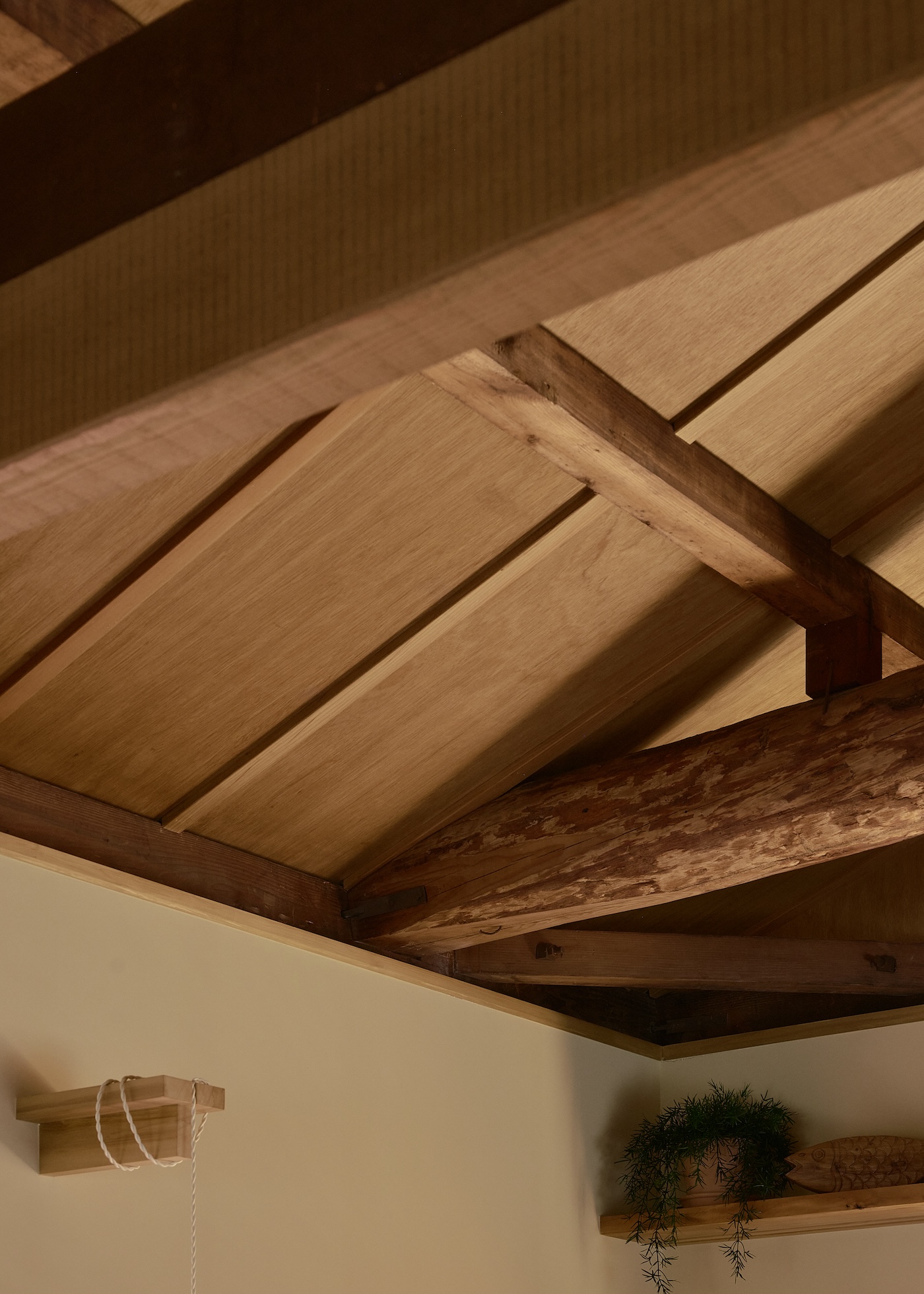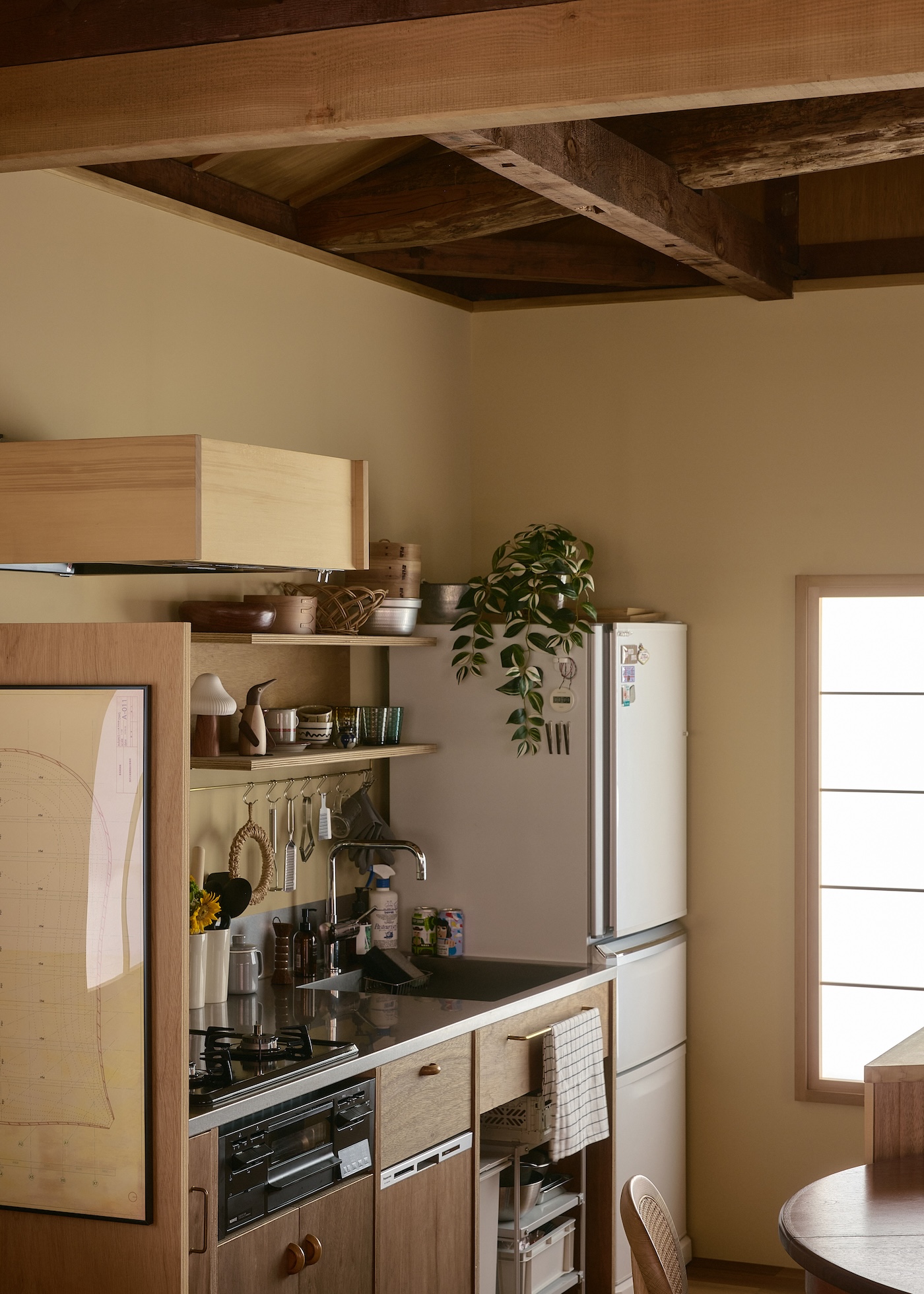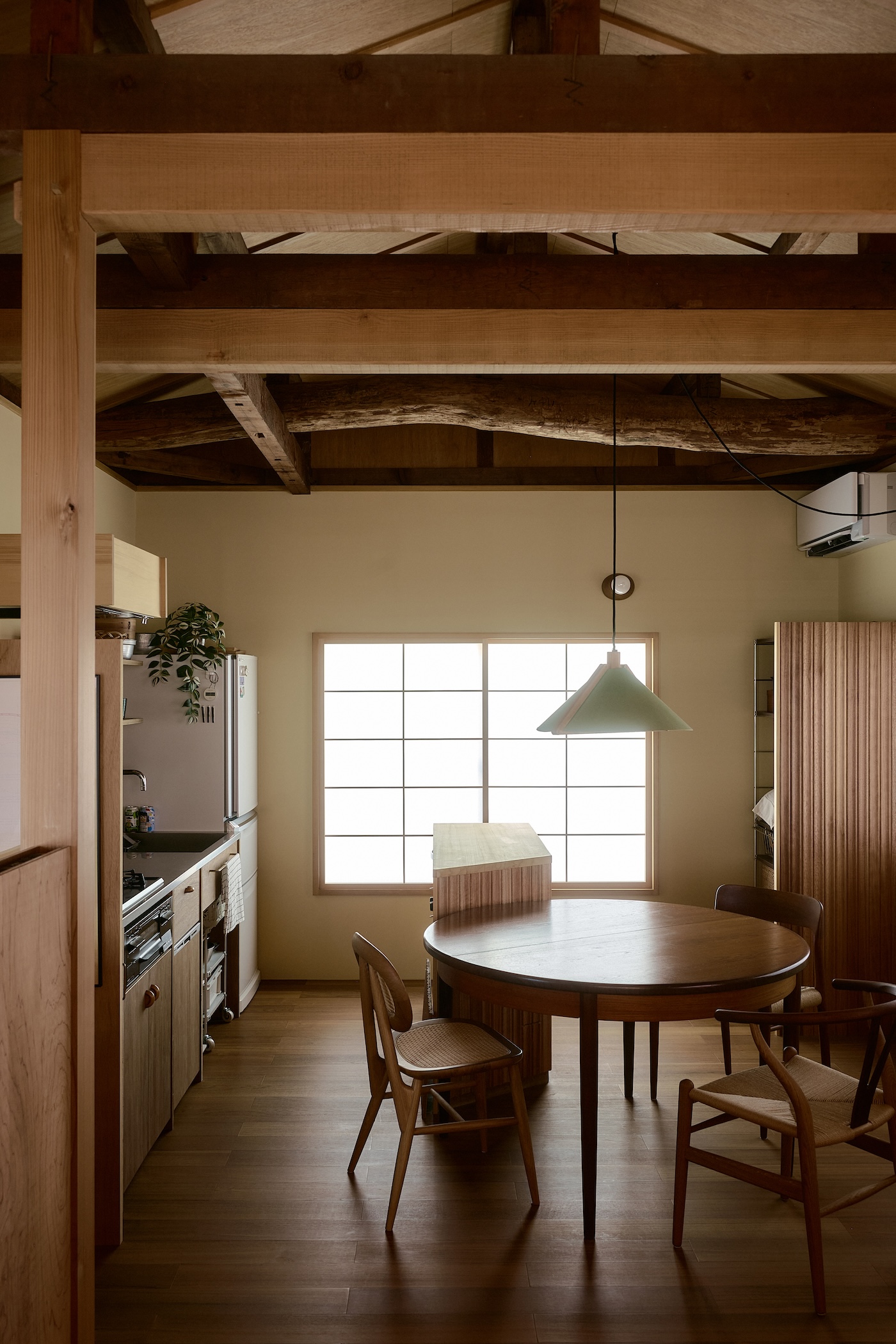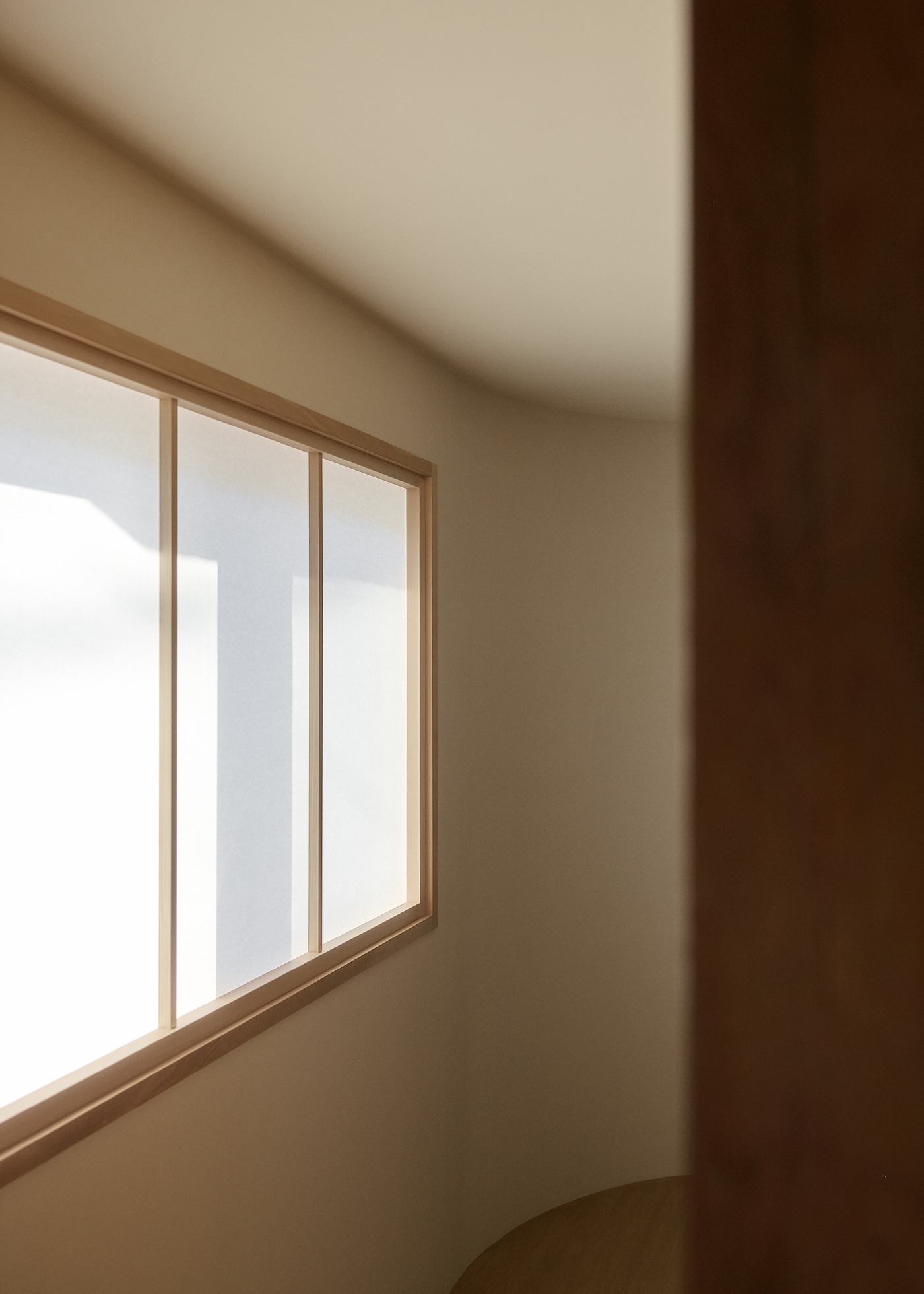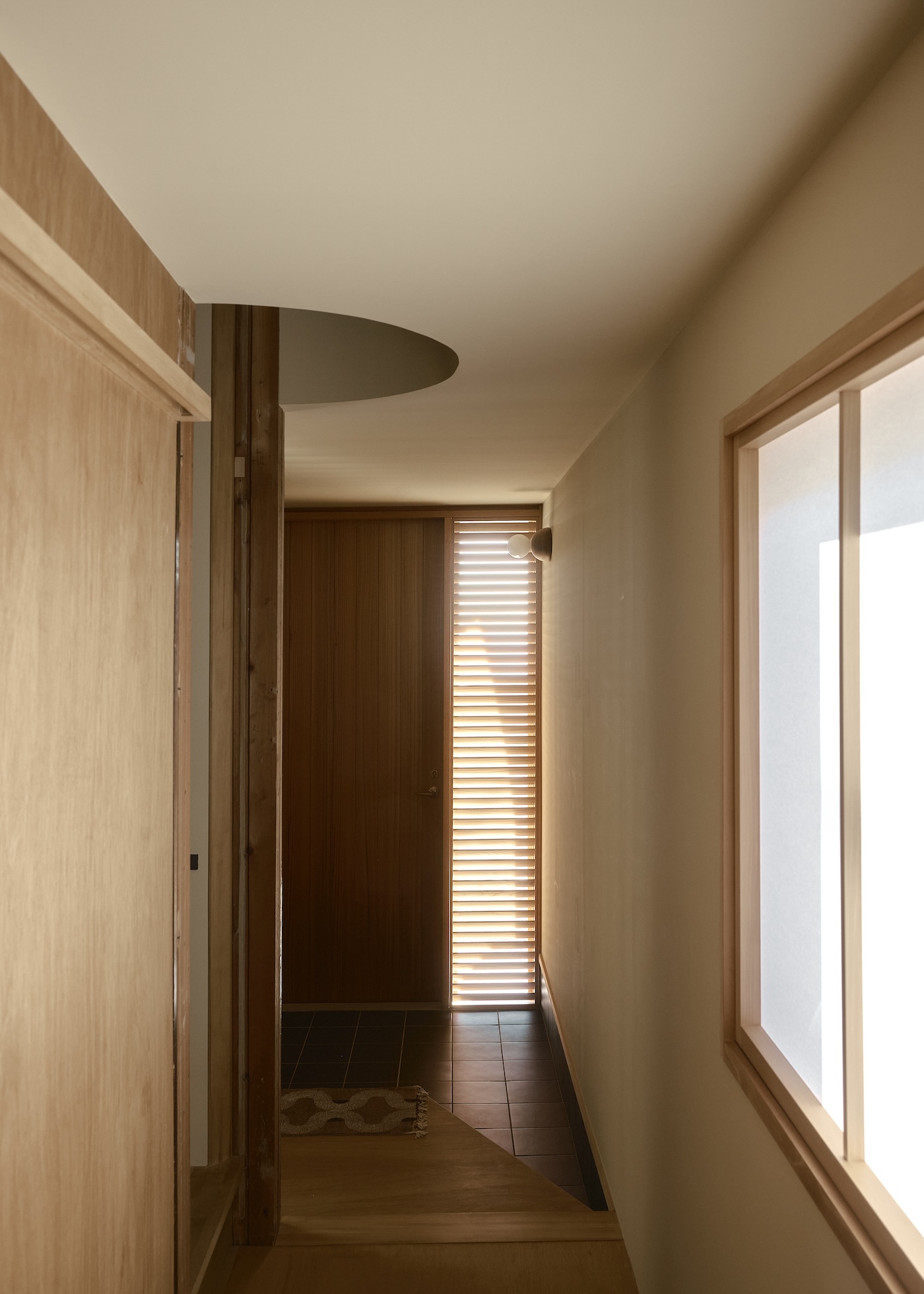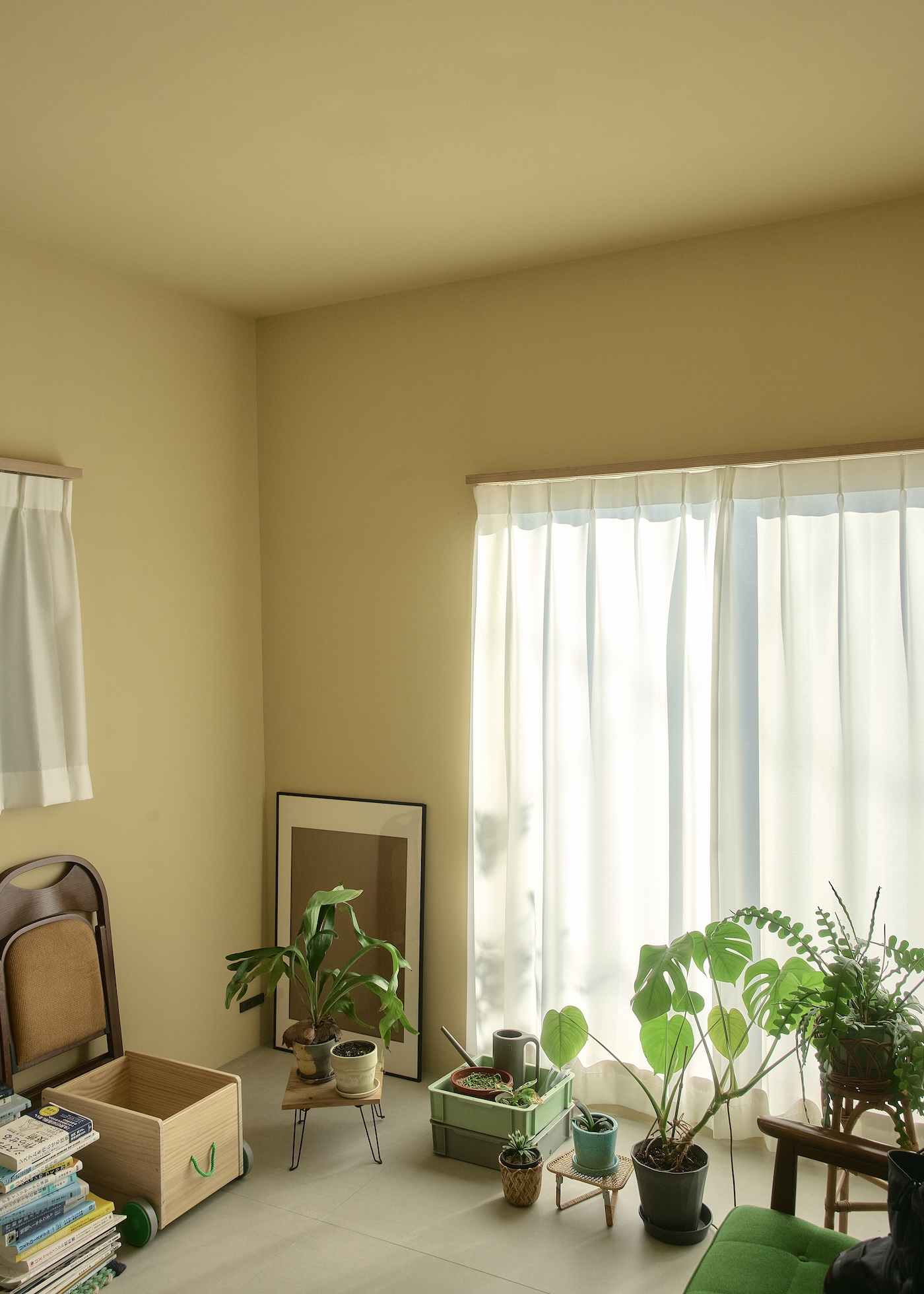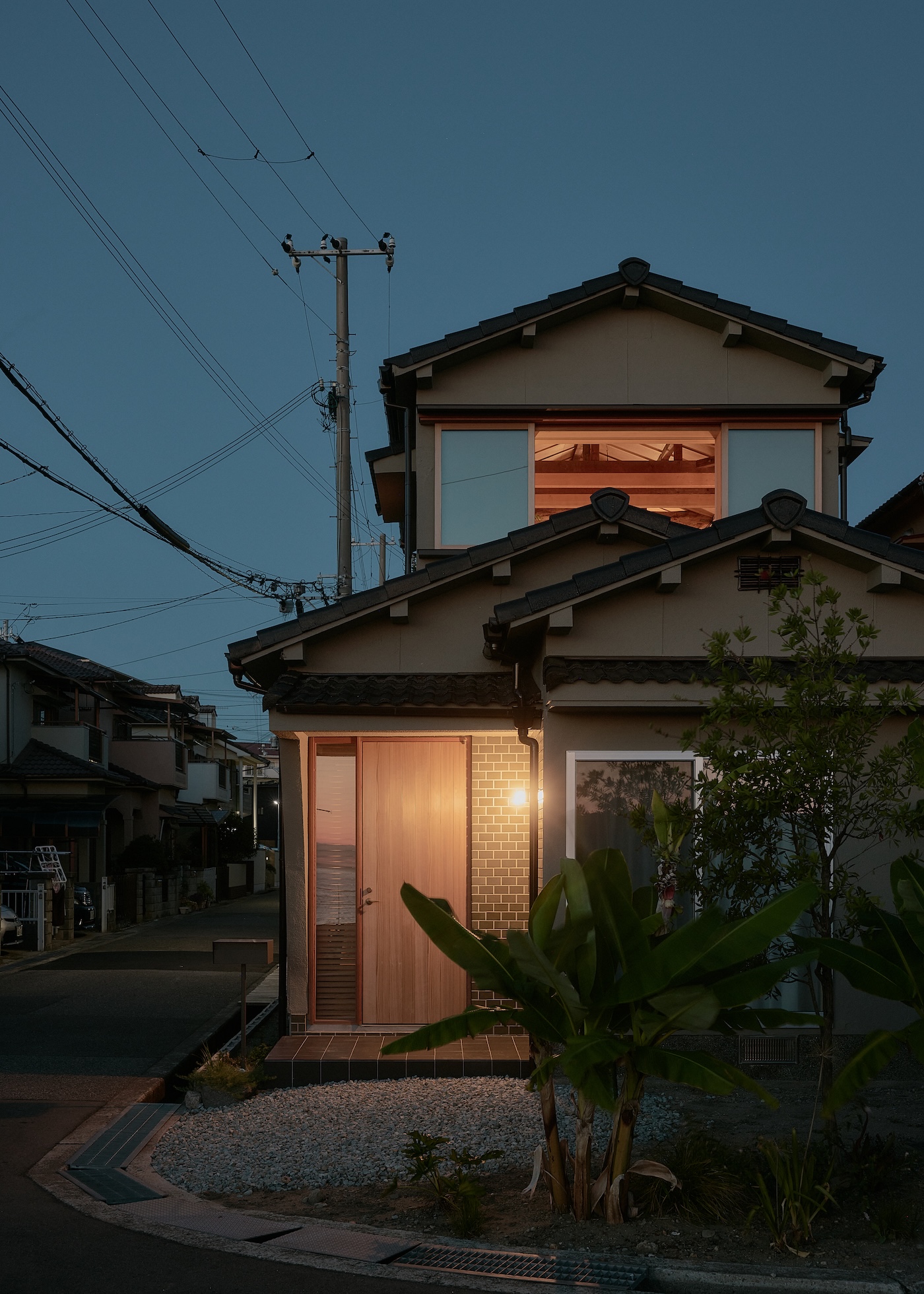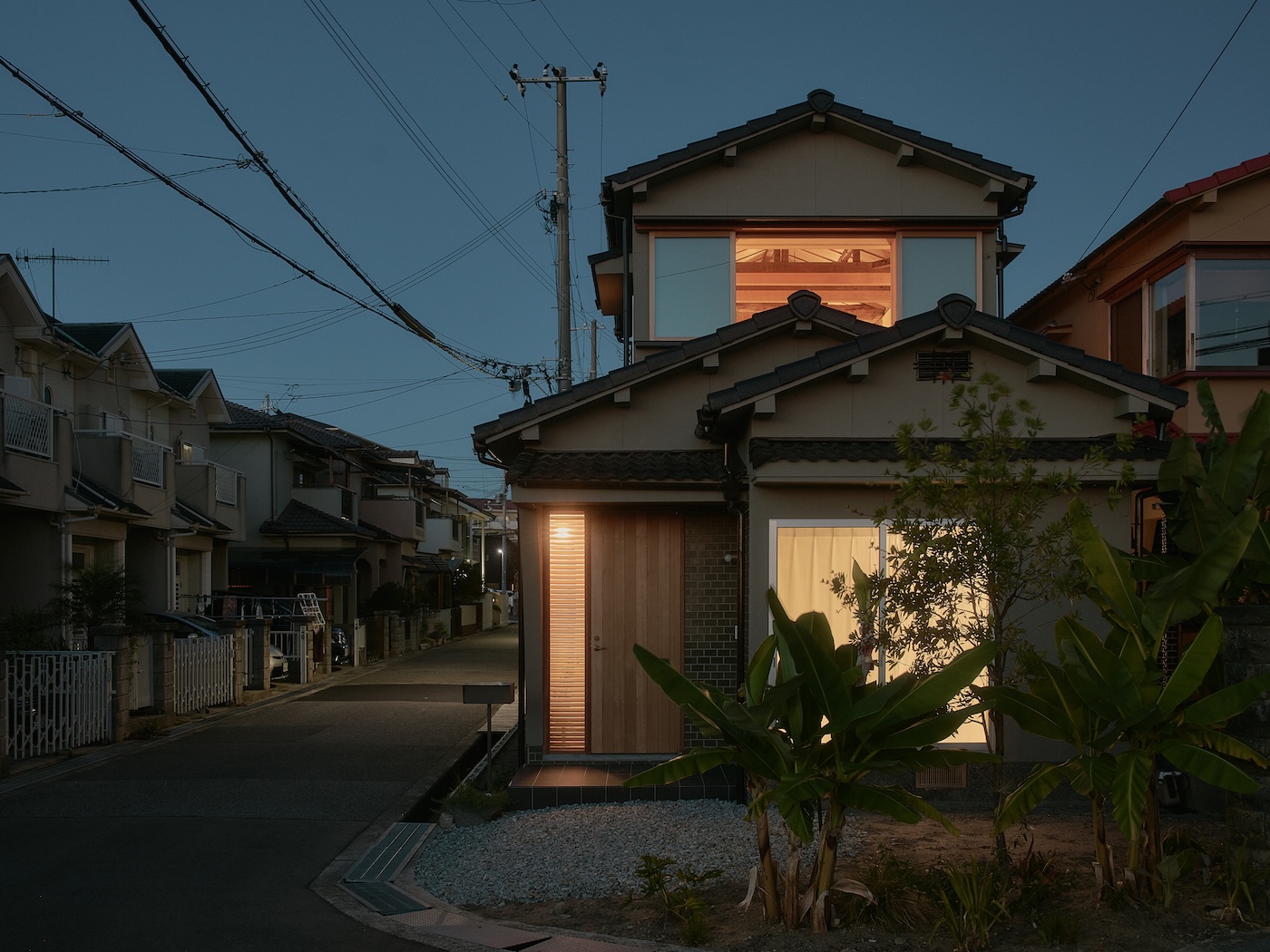明石の家
House in Akashi
貝殻を耳に当てると海の音がする。そんなこと、誰が最初に言い出したんだろう。確かにザーッと波のような音が聞こえてくるのを、子どもの頃は不思議に思った。構造上見ることのできない渦巻きの奥のまた奥に音の発生源が潜んでいるのか、はたまた、奥に穴が空いていてどこか南の島へと繋がっているんじゃないか。そんな想像が広がった。貝殻には、不思議と人を惹きつける魅力がある。主人をなくした貝殻の、鈍く虹色に反射する肌の内側。そこは空っぽなのに何かで満たされているような気がする。それは音だけではなく、潮の香りや生き物の記憶、あるいは時間の層のようなものかもしれない。
築50年の何でもない家をリノベーションした。設計中はそんなこと思わなかったのだけど、完成した家に入って、なぜか貝のようだと想った。
私は普段から、特定の主題をもって設計を進めることはしない。まず大まかな構成を整理した後は、ひとつひとつの空間について「こうした方が気持ちいいかな」とか「こうした方が魅力的かな」という断片を繋ぎ合わせて全体像をつくっていく。機能面や設備上の問題、コストの問題にぶつかれば、それを解決するための操作を加えて、意匠性と実現性を整合させていく。この家には、そうして生まれた幾何学的な空間性が散りばめられている。
交通量の多い周囲の環境からプライバシーを守りながら明かりを取り入れるために、障子で柔らかく閉じた空間をつくった。内部の建具は全て、コストを抑えるために既存の襖を再利用した引戸で、それらを開け放つと家全体がぐるぐると回遊するひと繋がりの空間となる。配管を中に通すために生まれた曲面の壁や、照明や換気などの機能のために飛び出した様々なかたち、階段の登り降りに合わせて半円形にくり抜かれた低い天井、そうしたものが見え隠れしながら奥へ奥へと続いていき、柔らかい迷宮のように人をいざなう。この家のこうした性質が、貝殻の内部を思わせるのかもしれない。
丸太の梁や傾いた躯体などの古い家が持つ揺らぎと、新たに加えた曲線や斜めの線、そして家主の持つ家具の自由な形が共鳴し合うことで、直線的で工業的な色は薄れて、全体として何か生物的な佇まいを纏っているようにも感じられる。濃く焼けた古い柱梁には50年の家の記憶が刻み込まれ、和紙を張り替えた襖や、キッチンに流用した古いタンスの取手が、新旧の境を曖昧にする。太陽光は障子やガラリ戸を通して拡散され、曲面の壁をなでて奥の空間へと抜けていく。移ろう光は、きれぎれに点在するものを抽象的に繋げ、縦と横、古さと新しさ、和風と洋風、光と影、といった二元論を崩していく。
窓を開けると、海辺の街の音が家の中に流れ込む。潮風とともに遠く聞こえる船の汽笛、鳥の声、5時のチャイム。音、風、光、記憶、そういった無形のものたちが空間を満たして響き合い、時とともにその表情を変えていく。この移ろいゆく空間が、新しく住まう家族をやさしく包み込んでくれることを願いながら、私はひとつの詩を思い出す。
私の耳は貝のから 海の響をなつかしむ
(ジャン・コクトー『耳』堀口大學 訳)
When you hold a seashell to your ear, you hear the sound of the sea. I wonder who first said that? As a child, I found it strange that I could indeed hear a sound like waves crashing. I imagined the source of the sound must lie deep within the spiral, hidden beyond what the structure allows us to see. Or perhaps there was a hole inside, connecting to a southern island somewhere. Such imaginings spread. Seashells have a mysterious charm that draws people in. The inside of a seashell, which has lost its owner, reflects a faint iridescence, and yet it feels empty, yet filled with something. It might not just be sound, but the scent of the sea, the memories of a living creature, or even layers of time.
I renovated an ordinary 50-year-old house. I didn’t think about it during the design phase, but stepping inside the completed house, I was reminded, for some reason, of a seashell.
I don’t usually approach design with a specific theme in mind. After first sorting out the rough composition, I piece together fragments—thoughts like “This might be more comfortable” or “This could be more appealing” for each individual space—to form the overall picture. When functional, equipment, or cost issues arise, I make adjustments to resolve them, aligning design intent with feasibility. This house is dotted with the geometric spatial qualities born from this process.
To allow light in while maintaining privacy from the busy surroundings, we created softly enclosed spaces using Shoji screens. All interior doors are sliding doors made from reused existing Fusuma to keep costs down, and when they are opened, the entire house becomes one continuous, looping space. Curved walls created to conceal piping, various shapes that protrude for functions such as lighting and ventilation, a low ceiling with a semicircular cutout for the staircase entrance—these elements appear and disappear as the space extends deeper and deeper, inviting occupants like a soft labyrinth. These characteristics of the house may evoke the inside of a seashell.
The instability of the old house such as its log beams and tilted structure, resonates with newly added curves and diagonal lines, as well as the free-form shapes of the homeowner’s furniture, softening the house’s linear, industrial feel, giving it an overall organic presence. The deeply tanned old pillars and beams hold fifty years of the house’s memory. The sliding doors with newly replaced washi paper and the handles from an old chest reused in the kitchen, blur the line between old and new. Sunlight diffuses through Shoji screens and louvers, caressing the curved walls before fading into the depths of the space. The shifting light abstractly connects the scattered elements, dissolving dualisms such as vertical and horizontal, old and new, Japanese and Western, light and shadow.
Open the windows and the sounds of the seaside town flow into the house. With the sea breeze come the distant ship’s horn, birdsong, the 5 p.m. town chime. Sound, wind, light, memory—these intangible elements fill the space, resonating together and shifting their expression over time. Hoping this ever-changing space will gently embrace the new family living here, I am reminded of a poem:
Mon oreille est un coquillage
Qui aime le bruit de la mer
(“My ear is a seashell / That loves the sound of the sea.”)
—Jean Cocteau, “Cannes V”
所在地:兵庫県明石市
種別:リノベーション
用途:住宅
構造・規模:木造 2F
延床面積:77㎡
完成:2025年
施工:笹原建設
造園:abcde studio
Location:Akashi, Hyogo
Type:Renovation
Usage:Residence
Structure:Wood, 2 stories
Floor area:77㎡
Completion:2025
Construction:Sasahara Construction
Landscape:abcde studio
Photo 1-22:Yosuke Ohtake
Photo 23-36:Brook James
掲載 / Publications:
